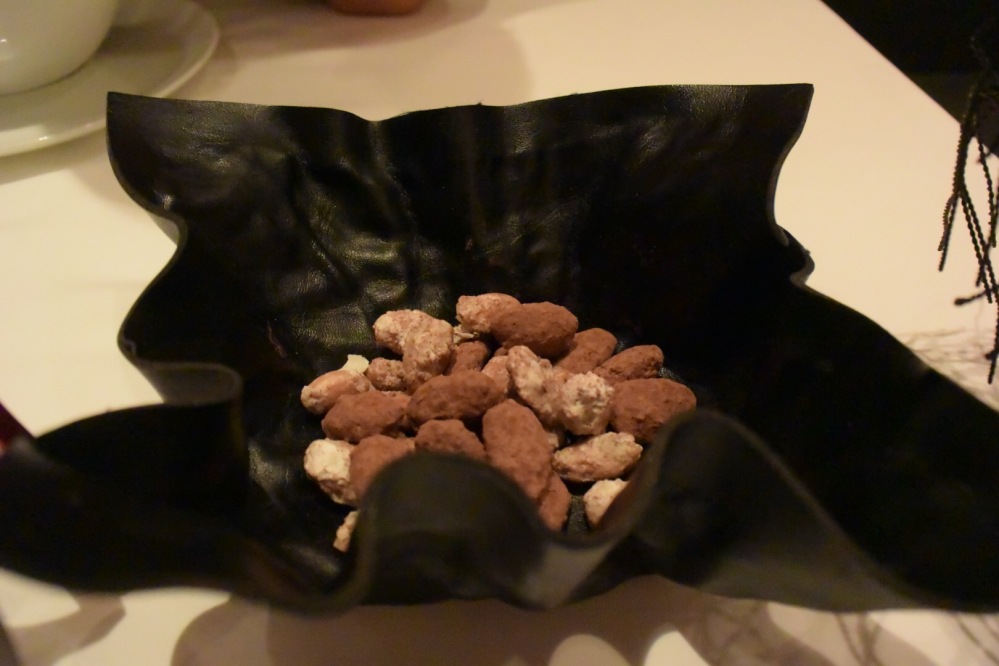Update- I re-visited Zurriola in April of 2017, and it was better than the first time. Check it out here!
When Michelin announced its Tokyo guide in December 2014, I somehow missed the fact that only three restaurants were promoted from one coveted star to an even more impressive two stars. Moreover, one of these restaurants serves Spanish cuisine, a rarity in Tokyo as only two other Spanish restaurants made Michelin’s list of 548 restaurants.
Upon researching Zurriola, I found that they use a simple Open Table reservation system, and quickly made a reservation just one week prior to visiting. I must say, I love it when respected restaurants have a simple reservation system that allow you to view available seats online and quickly proceed with confirming your reservation. It beats endlessly calling a restaurant during a limited time period only to get a busy signal. Looking at you Sukiyabashi Jiro. Or maybe I just need to make some connections. Anyways…
Zurriola is right off the main strip in Ginza, very easy to find as it is atop Barney’s New York. It’s location is central, but being on the restaurant floor above Barney’s does give you the feeling that you are eating inside a mall or department store. However, upon entering the restaurant you are warmly welcomed by the gracious staff and led to a table that feels intimate, quiet, and very comfortable. Actually, when the staff called me to confirm my reservation, I was able to choose between a dining room seat or the open-kitchen style counter seat. We chose the latter and had a great shot of all the cooking action. Additionally, our reservation was at 6pm (I like to eat dinner early-ish), so we were the only customers for most of our dinner. We were lucky enough to be served and described every dish by the owner-chef Honda-san himself. We also got to hear his stories about living and traveling through Spain. Exciting, as we will be visiting Spain for the first time at the end of this year.
There are two courses to choose from at dinner. One is around 15,000 yen and the other is around 20,000 yen (including tax and service charge). The difference is due to the latter course featuring the absolutely divine caviar dish (see below) and different proteins depending on the day’s menu. A restaurant like Zurriola is usually for a special occasion, so I would highly recommend the pricier course. The caviar is so very worth it. Standard draft beers are around 1000 yen a pop, and glasses of wine start from around 1500 yen each.
Let’s eat Zurriola!
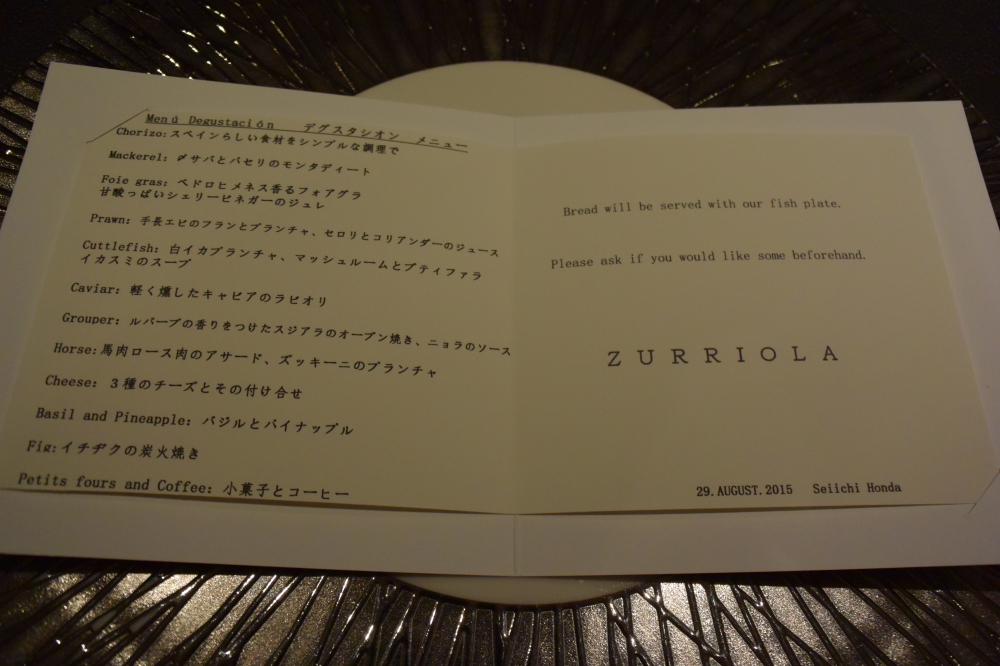
The menu was opened at our table setting before we sat down. It’s quite detailed.
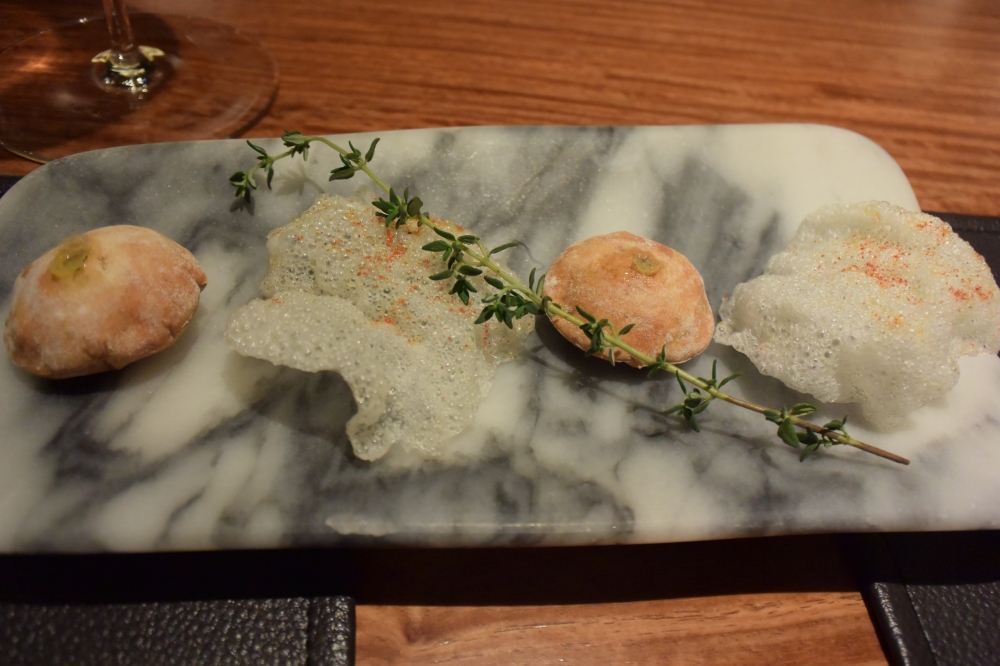
The amuse bouche, not listed on the menu above. The item that looks like bread is more like a cracker filled with a deeply rich olive oil that bursts in your mouth with flavor. You must eat in one bite unless you want to wear the olive oil for the rest of the evening. The other item is a rice cracker dusted with paprika powder.
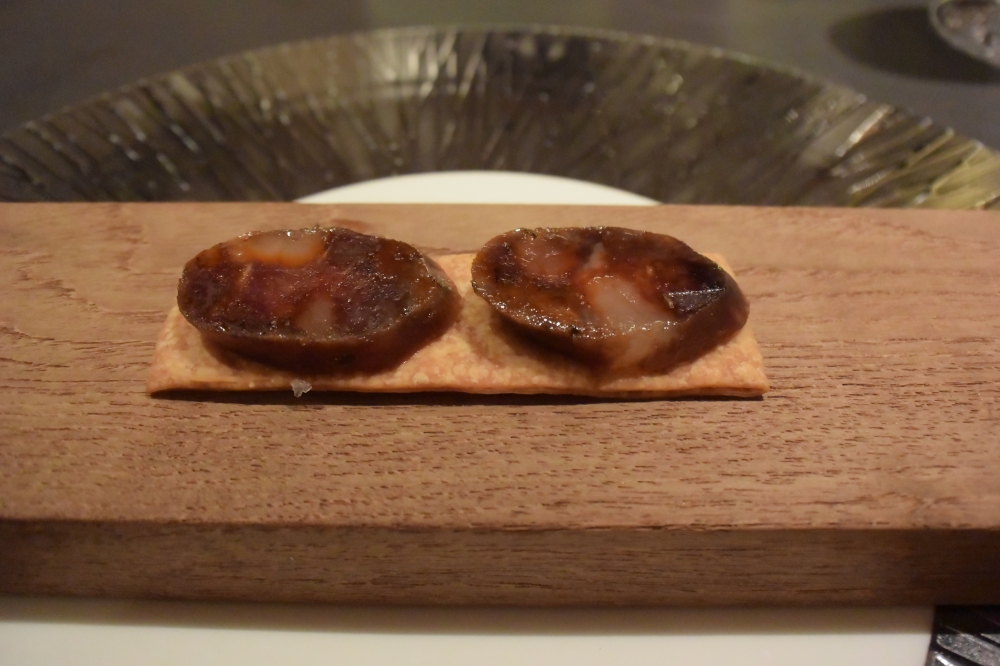
The course starts with homemade chorizo sausage, because as the chef says, it is Spain’s quintessential food. What appears to be one cracker is actually three very thinly prepared crackers made with flour and olives. A tapas enjoyed by hand.
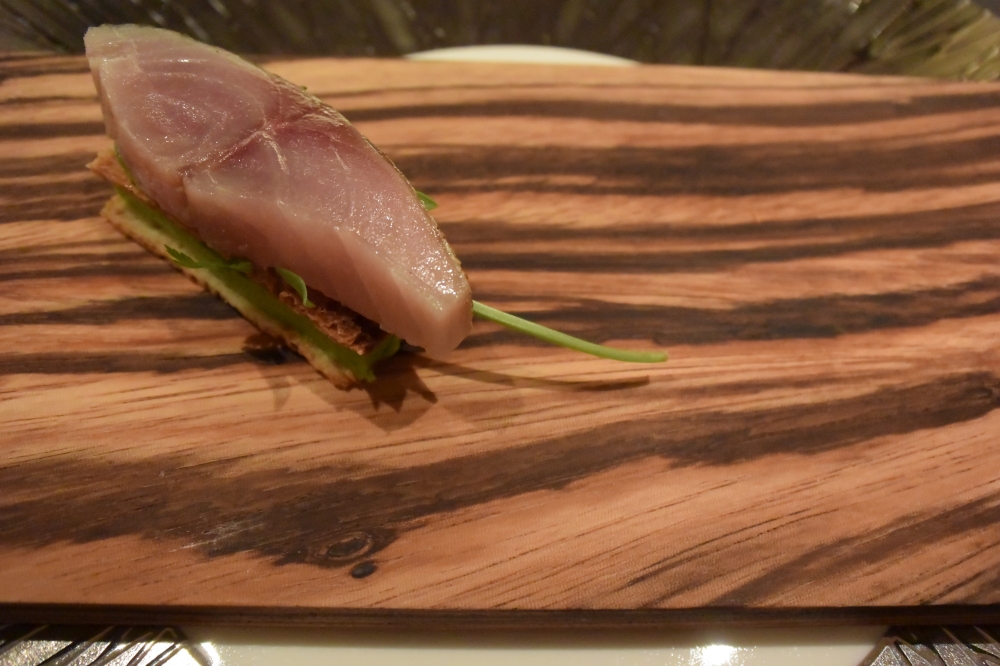
The next tapas is mackerel atop a cracker filled with parsley sauce that’s been made into a jelly.
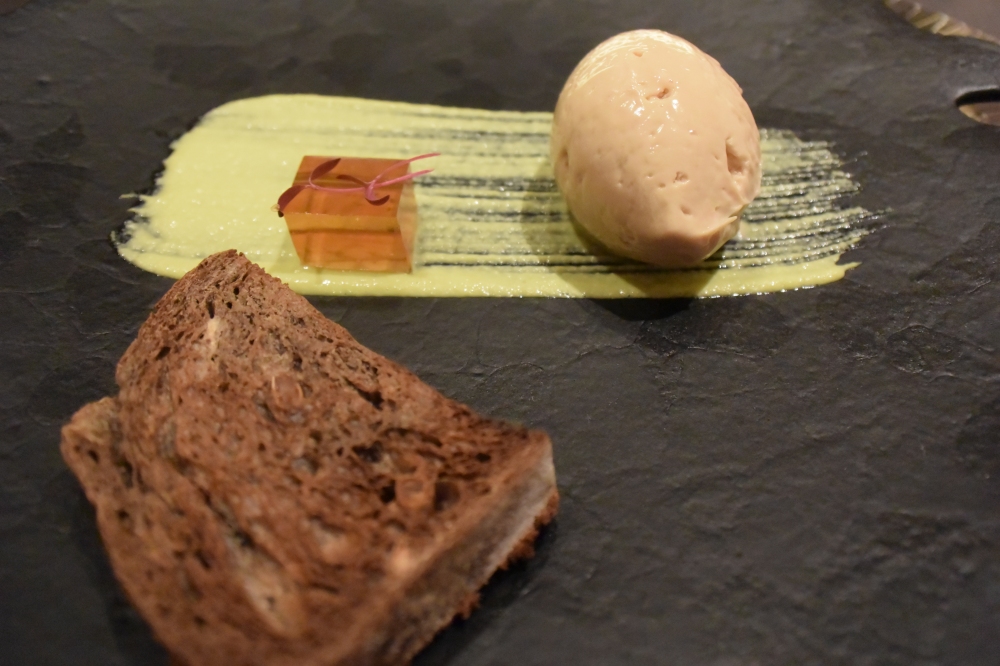
One of the highlights of Zurriola- the foie gras. This is served regardless of season and is an emulsified foie gras that has been mixed with sherry wine atop a pistachio sauce. The small gelatinous cube is made with sherry vinegar and the bread has various Spanish spices in it for a hot kick. You can mix and match all the ingredients, and every bite is guaranteed to be delicious. The foie gras has the texture of creamy ice cream and had no bitter aftertaste as foie gras sometimes does. Absolute perfection on a plate.
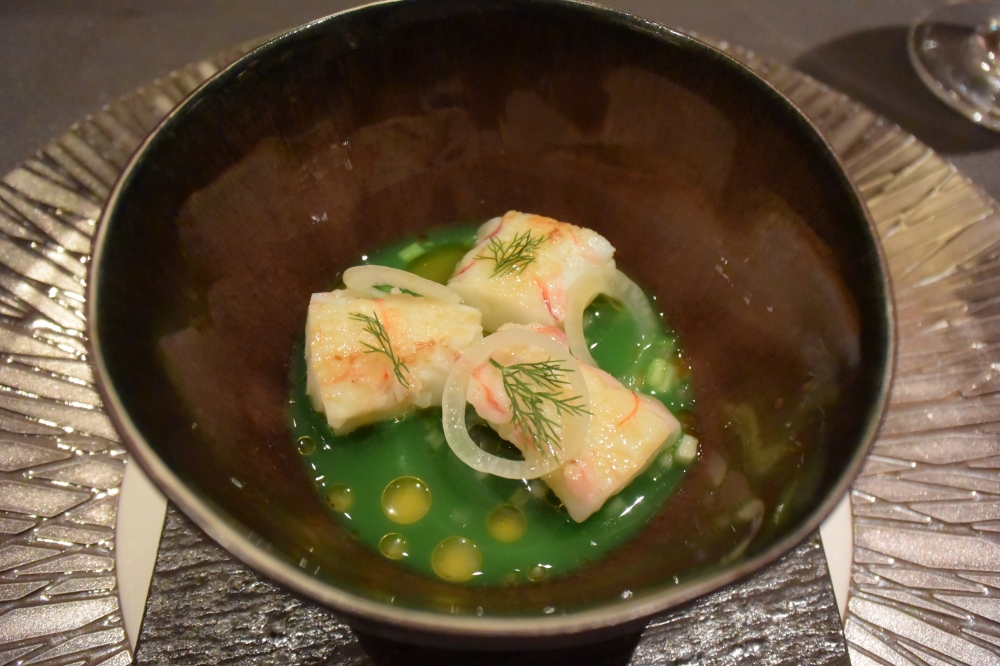
Tenaga ebi (shrimp) scampi with a celery, cilantro, and lime juice, atop a flan made from the shrimp heads for a deep umami flavor. A little bit of kick from the juice. Great presentation here.
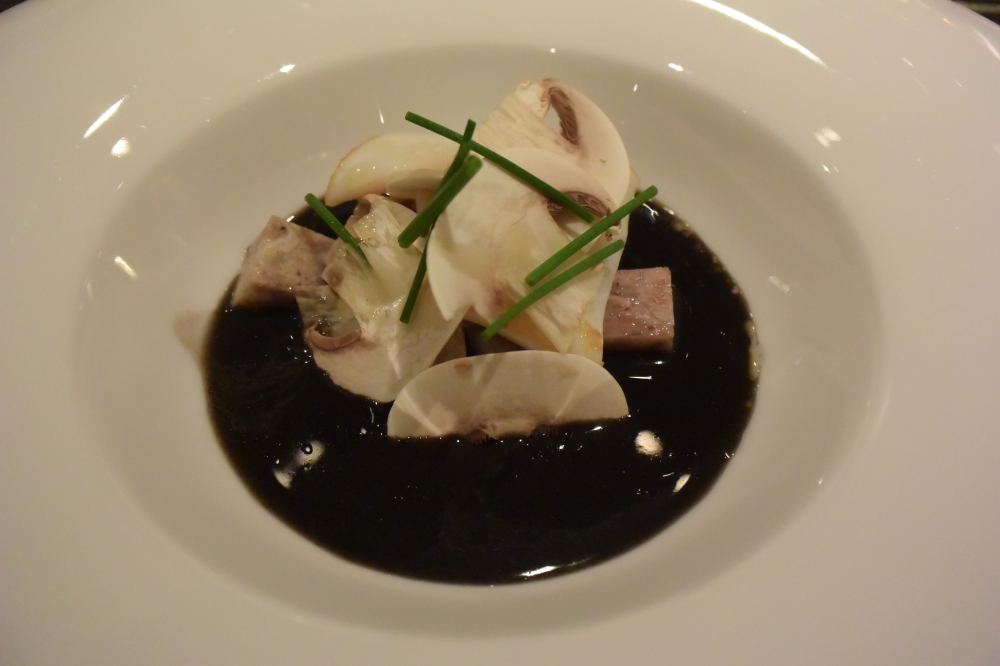
Squid with raw mushrooms and small cubes of homemade pork innards sausage. The chef pours the black sauce at your table, which consists of a squid ink dashi. Creamy and buttery deliciousness.
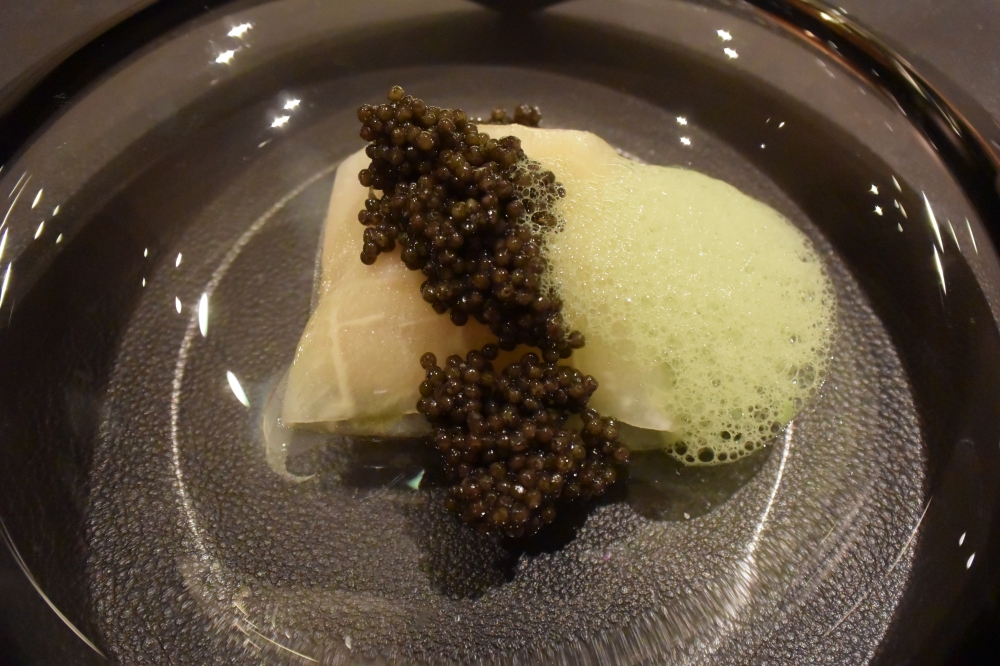
And here we have the bright, shining star of the show- the caviar. Just look at that.
The caviar is smoked in front of you using grape stems to infuse them with a heavy, smoky flavor. The chef shows his creative technique by steaming the caviar above a moistened piece of konbu seaweed so that the caviar retains its own moisture after being smoked. The caviar is placed on a ravioli topped with thinly sliced daikon radish and finished with a parsley foam.
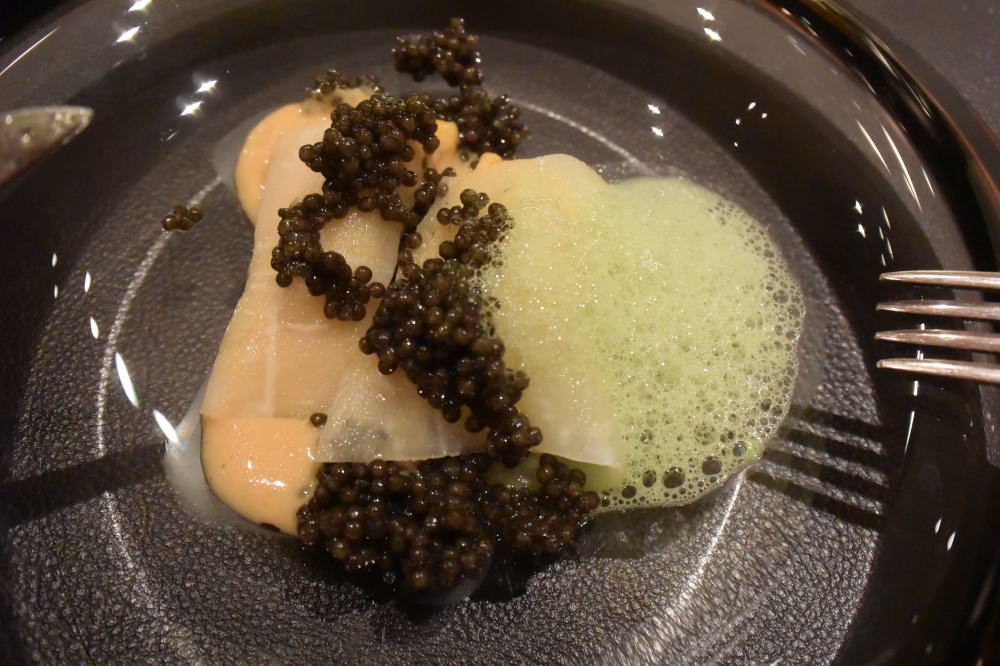
When you cut through the ravioli, a delectable garlic cream sauce spews outward. As I mentioned above, this dish alone makes it worth going for the more expensive course. Do it.
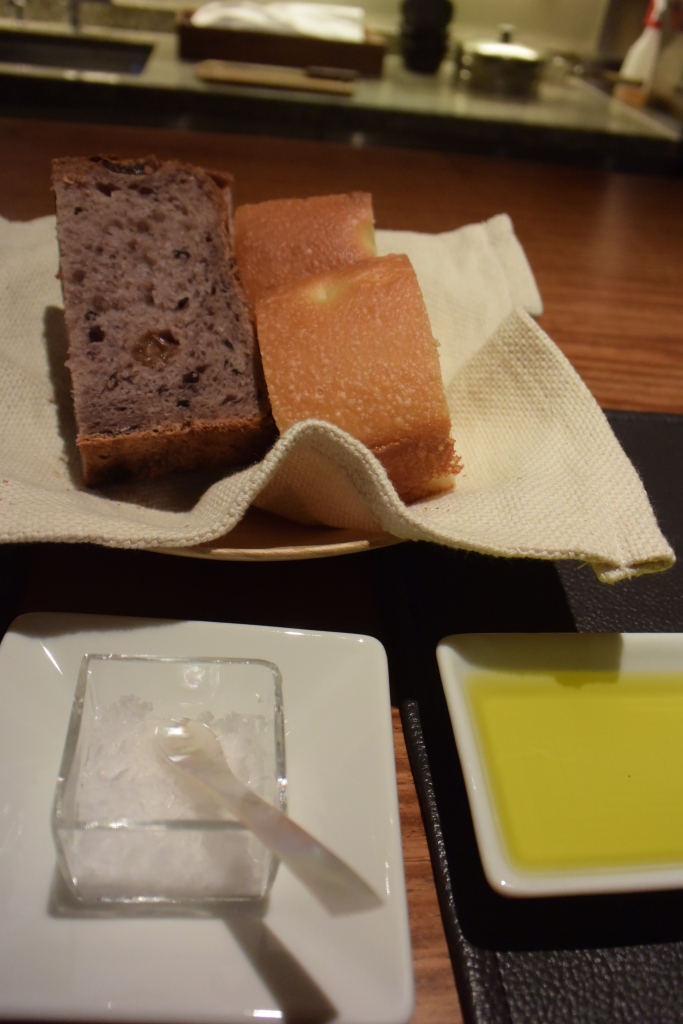
Bread before the fish course. On the left, red wine infused bread ordered directly from Spain. On the right is homemade focaccia bread. Served with salt and olive oil that has also been imported from Spain.
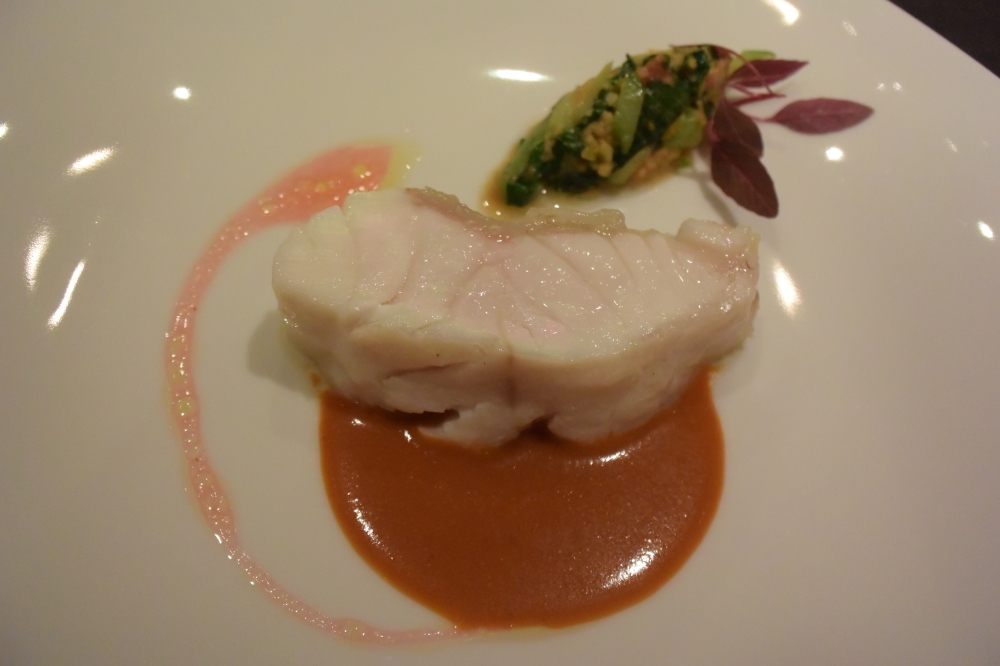
Grouper with a rhubarb garnish and a Spanish pepper sauce. For an international twist, chingensai (bok choy) is served on the side and cooked with olives and pine nuts.
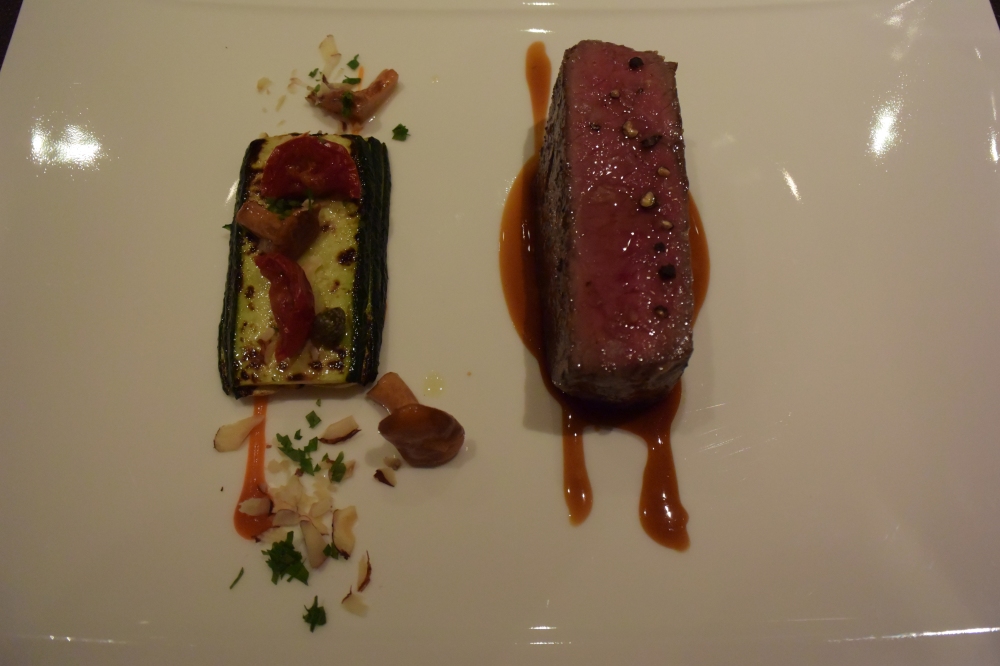
And the final protein. Oh my. This, my friends, is horse. Even though I’ve had horse a few times in Japan (always served raw), I was a little apprehensive about eating horse as the final course tonight and considered asking for a substitute protein. However, I’m so glad I didn’t. This was simply amazing. Lean, juicy, and bursting with flavor. I am officially a fan of horse and will search it out when I’m in Spain. On the left is charred zucchini, and much like the cracker under the chorizo from the first course, the zucchini is served cut very thinly and stacked in three. This and the caviar dish really put Zurriola in a league of it’s own. Bravo!
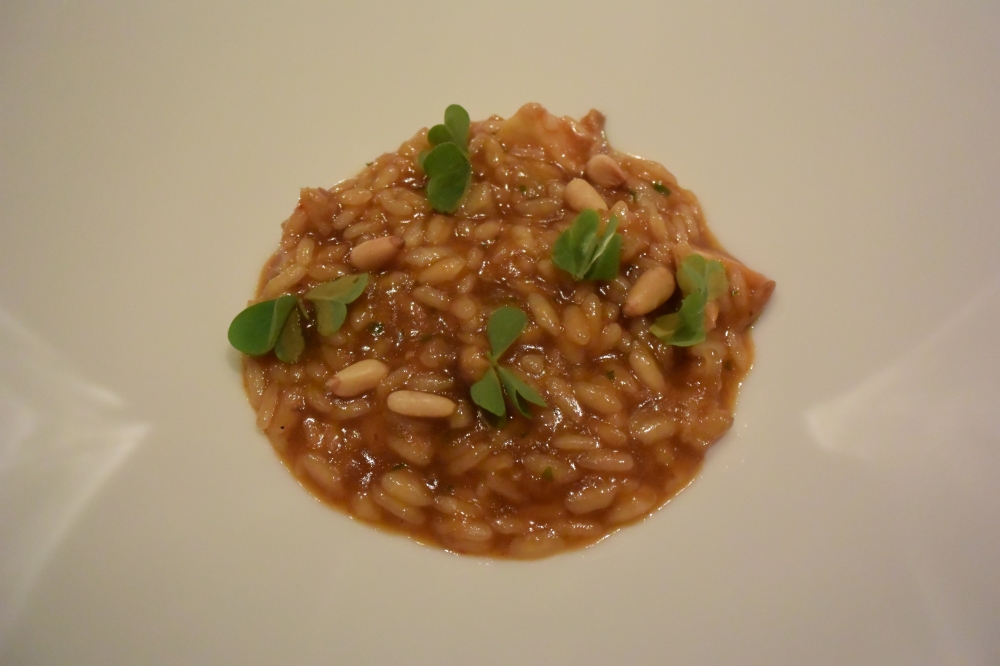
We were asked if we had room in our stomachs for a rice dish before the cheese platter. I’m never one to say no to this kind of offer, and so we were brought a Spanish rice made with shiitake mushrooms and pigs feet. A great way to finish the main course.

The cheese plate was both playful and beautiful. From L to R, Sainte Moure de Touraine with a honey jelly, Abondance Fermiere with a red pepper jam (served in the shape of a pepper), La Peral with a carrot candy-enwrapped sweetened carrot. They were all delicious combinations, but the pungency of the rightmost cheese was perfectly balanced by the sweetness of the carrot preparation. There really is not much better than a delightful cheese platter to bridge the savory and sweet courses.
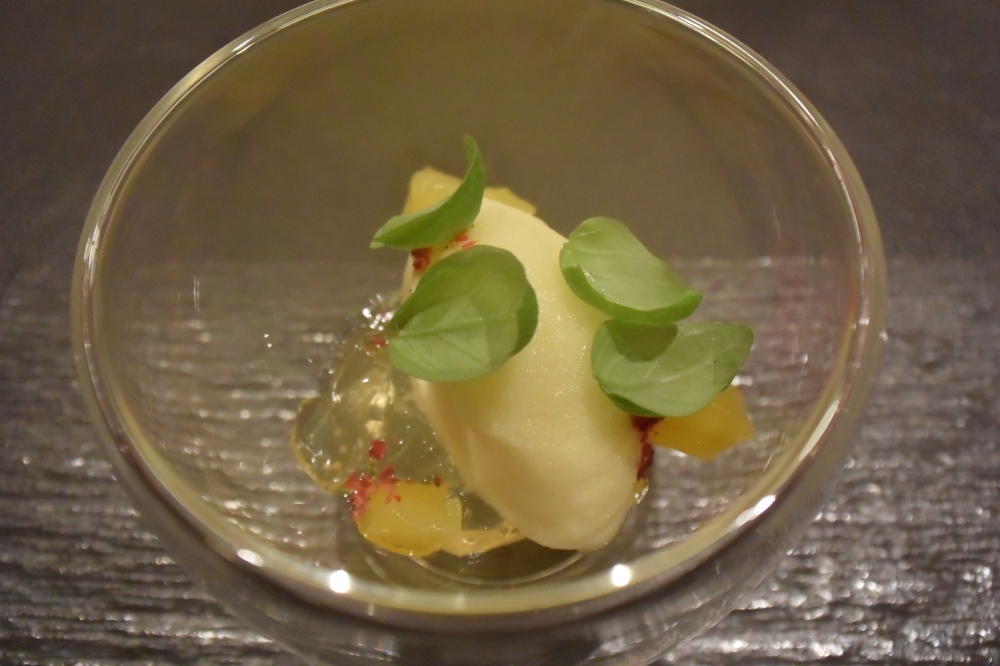
The first dessert was a pineapple sorbet served with pineapple jelly and chunks of real pineapple all topped with basil leaves. This was a tropical and refreshing dish.
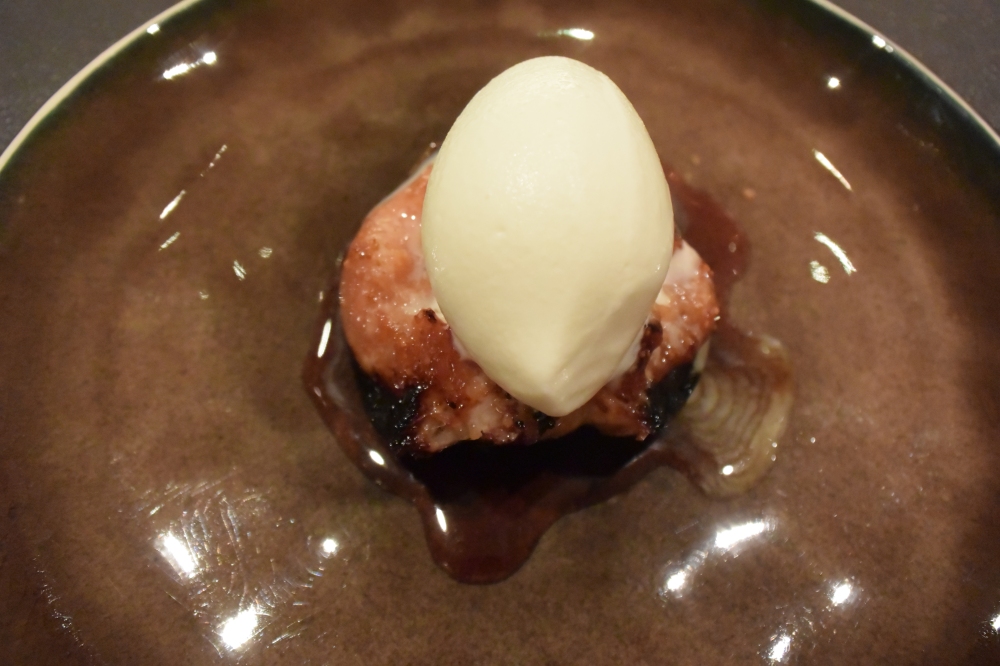
The chef described this as a simple dessert, but I would say it’s more deceptively simple than anything. He grills figs over charcoal for quite a while and serves them atop a light and flaky pie crust. This is all topped with rosemary ice cream. My mom and sisters probably would have been angry if they were sitting with me, because after I finished this dessert, I was licking up the remains with my fingers. Sorry.
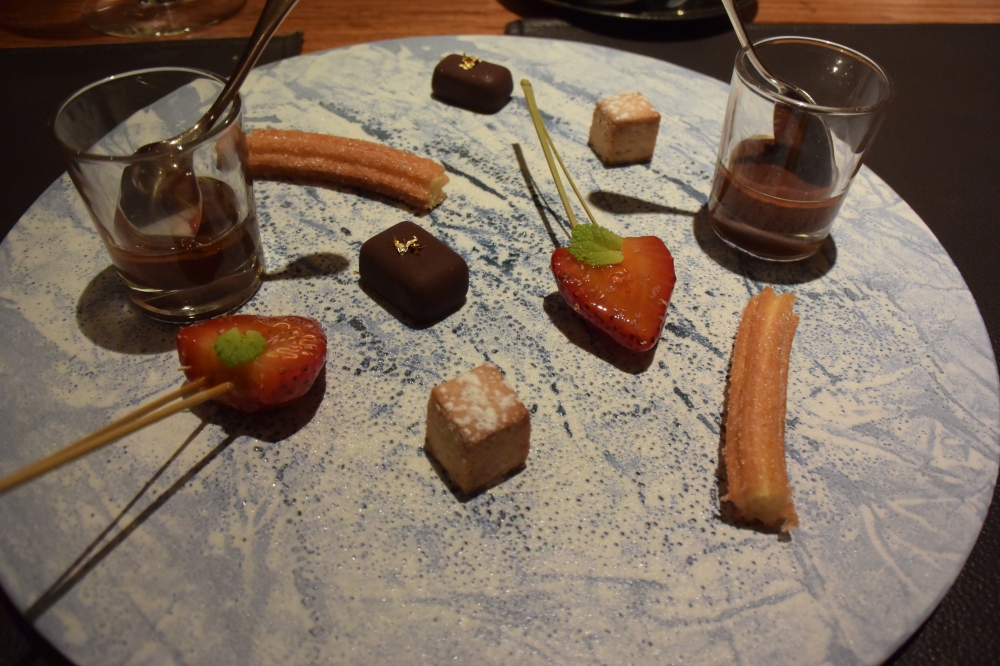
Finally, petit fours and coffee. Churros, caramel-coated strawberries, melted chocolate topped with olive oil and salt, lime-filled chocolate, and biscuits made with lard. All the chocolate is made in house using imported chocolate beans. A beautiful ending to what was by far my favorite meal of 2015 so far.













































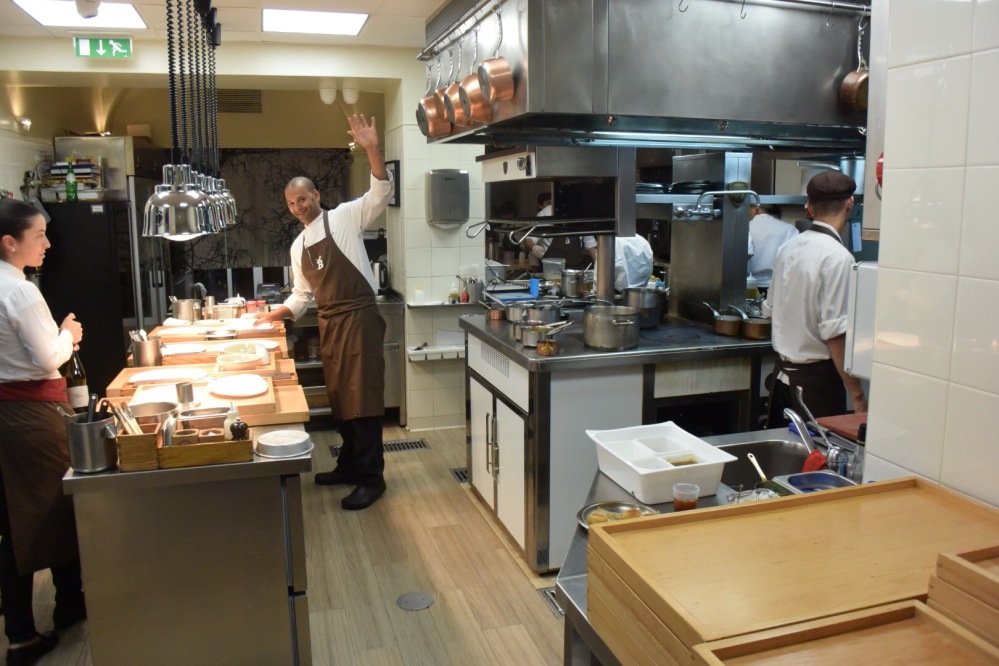














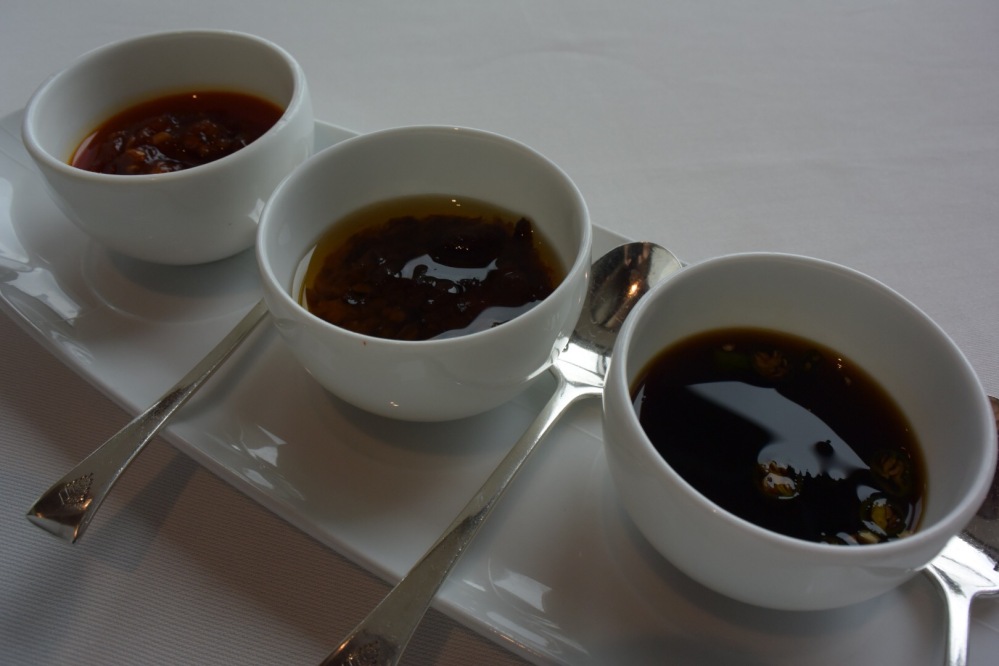
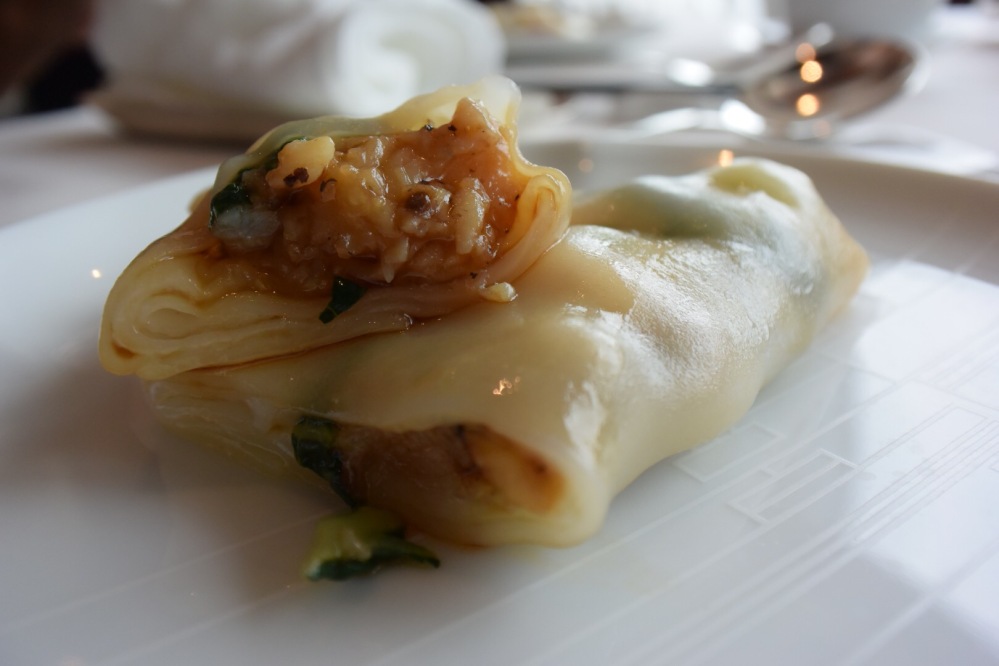
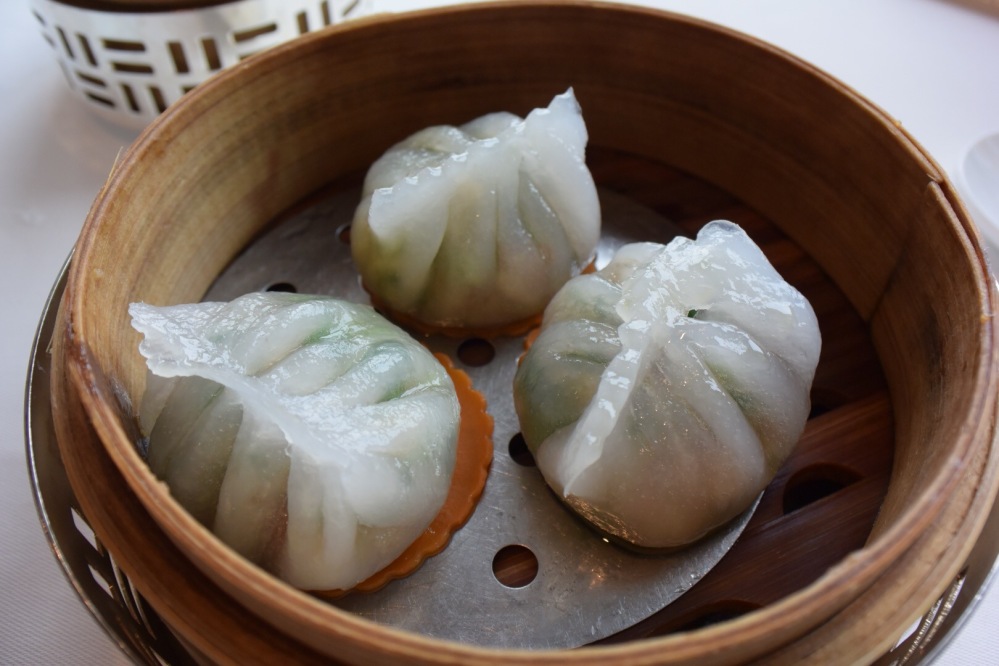
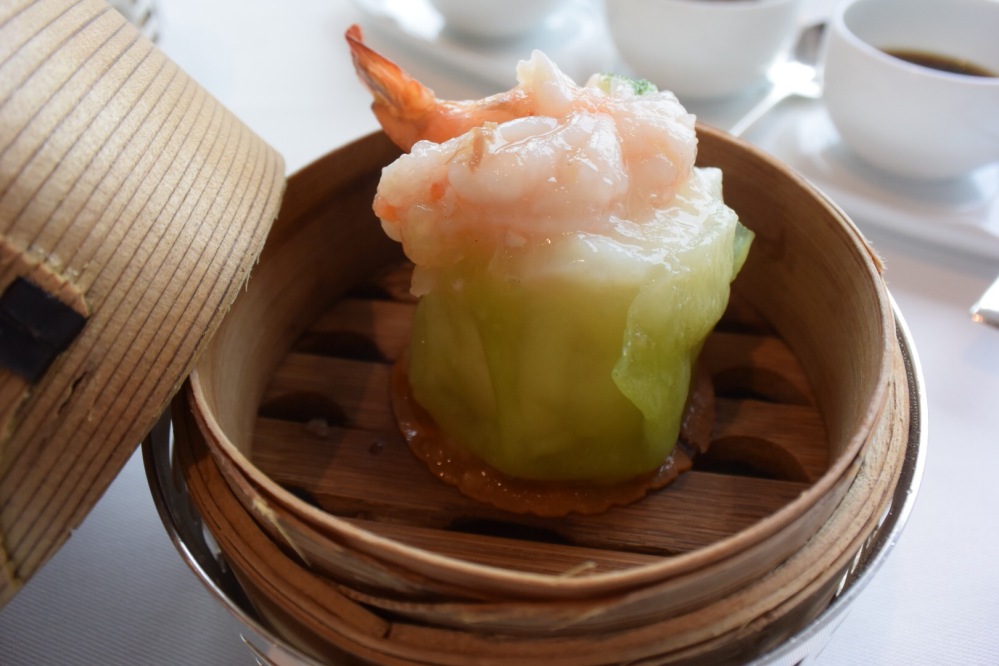
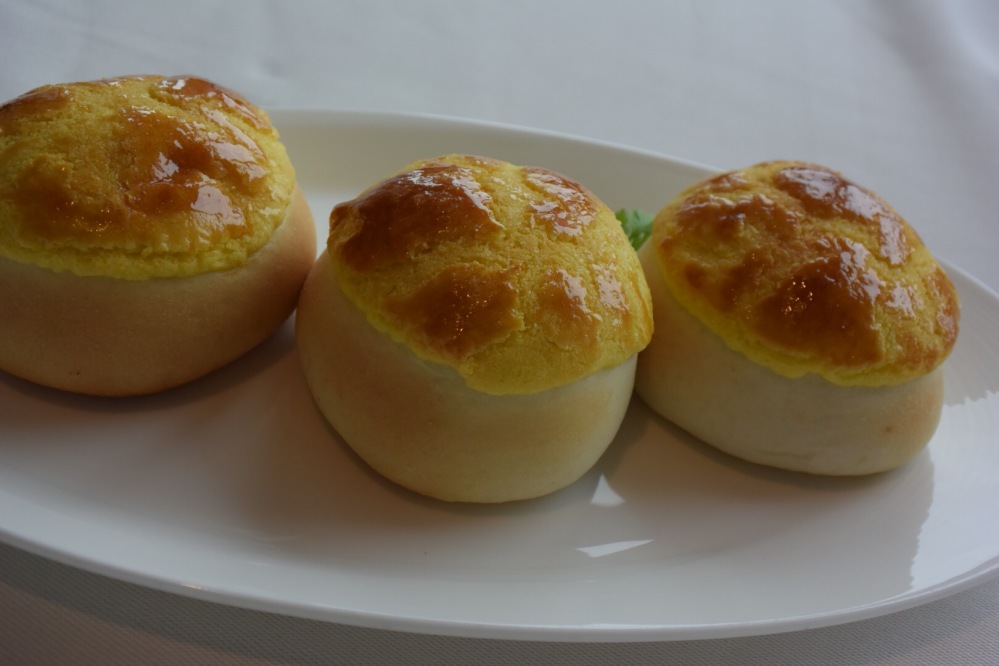
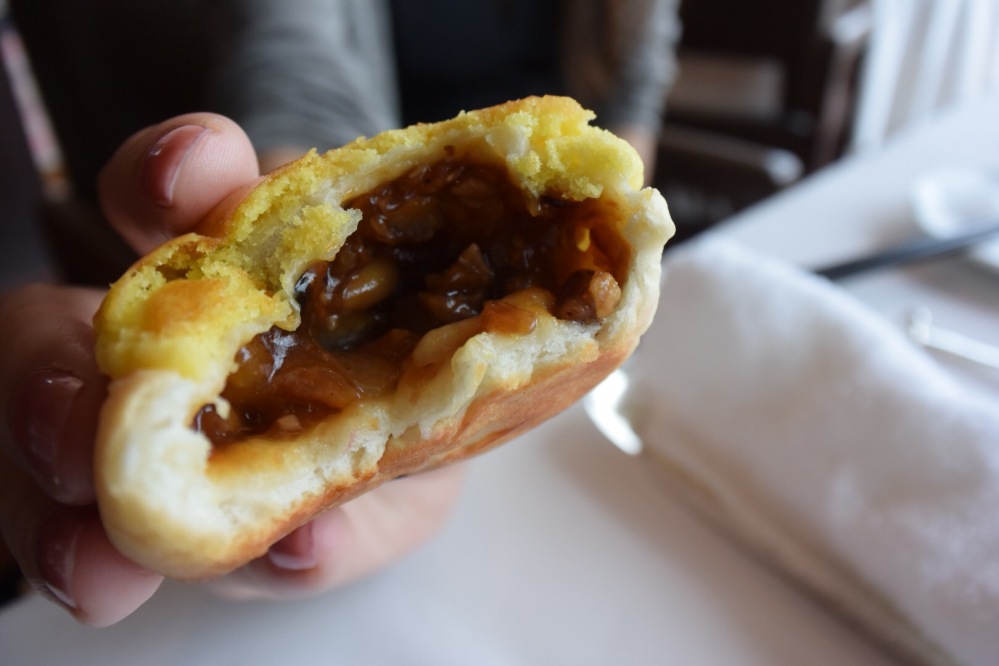
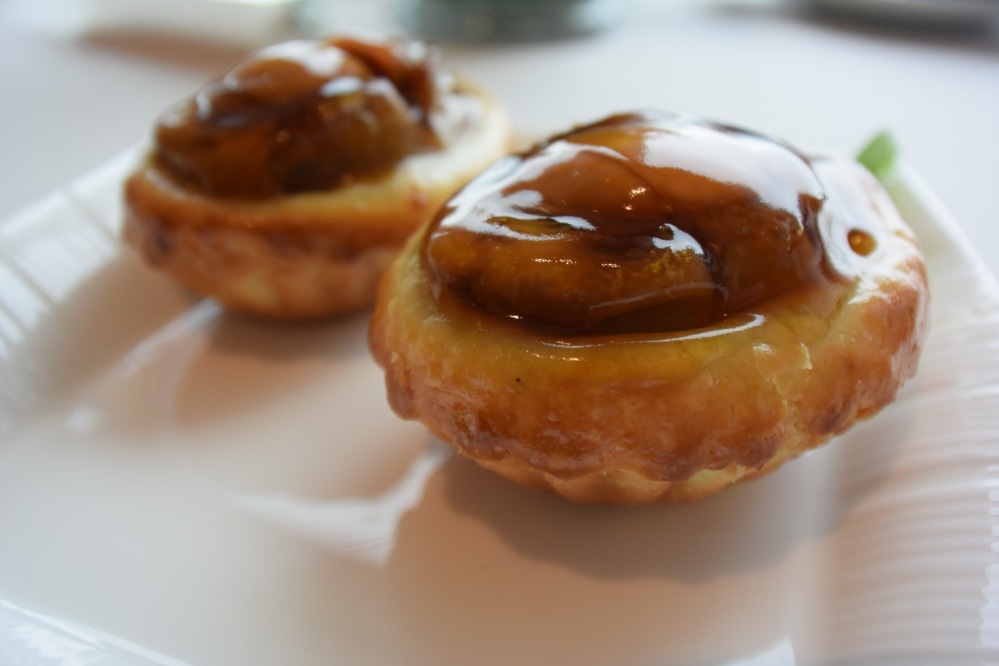
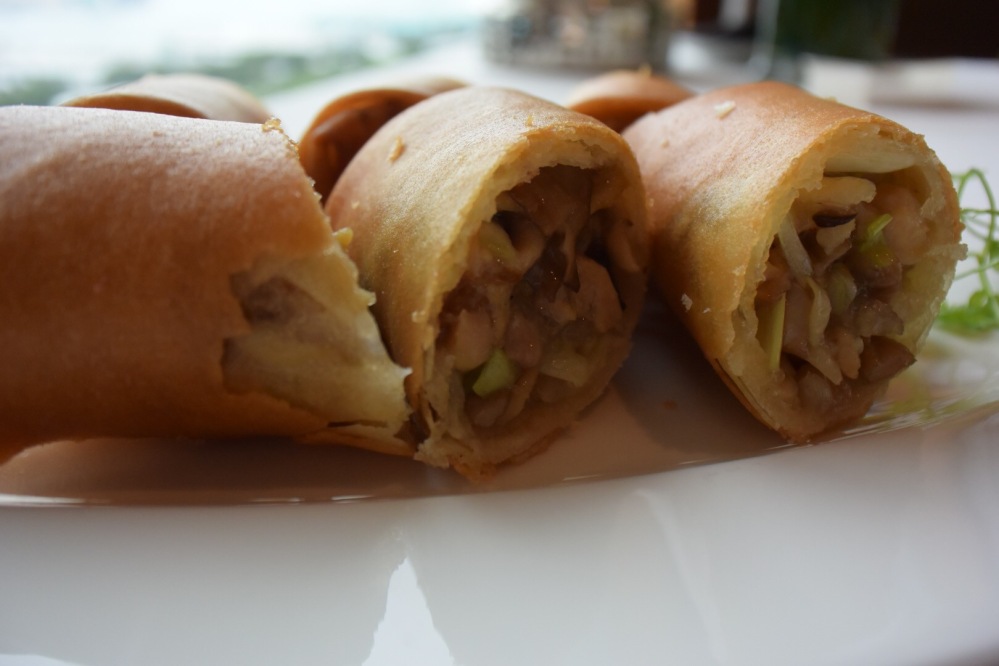

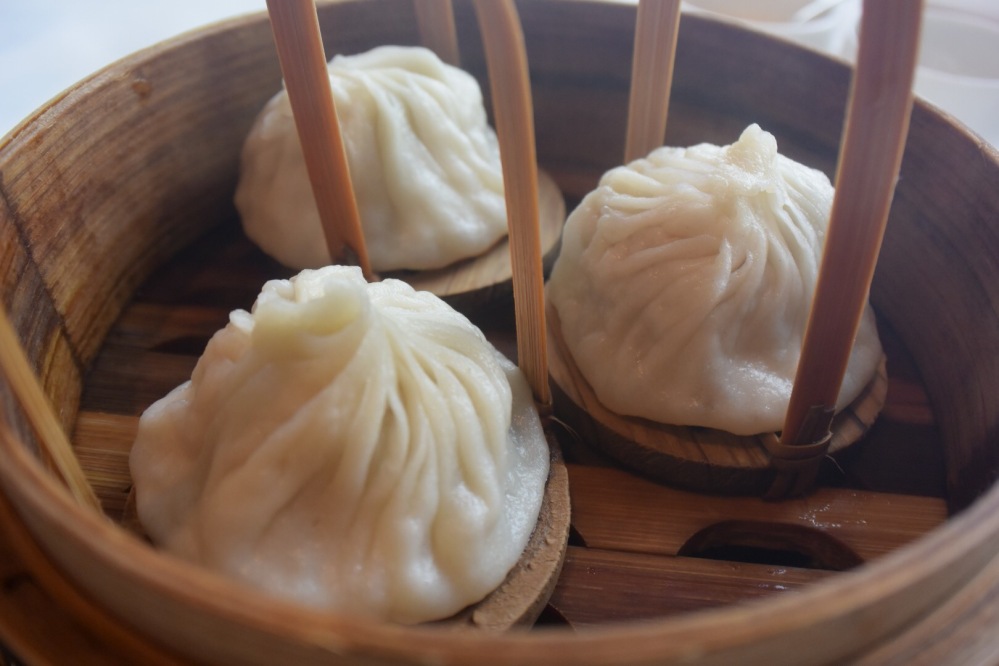
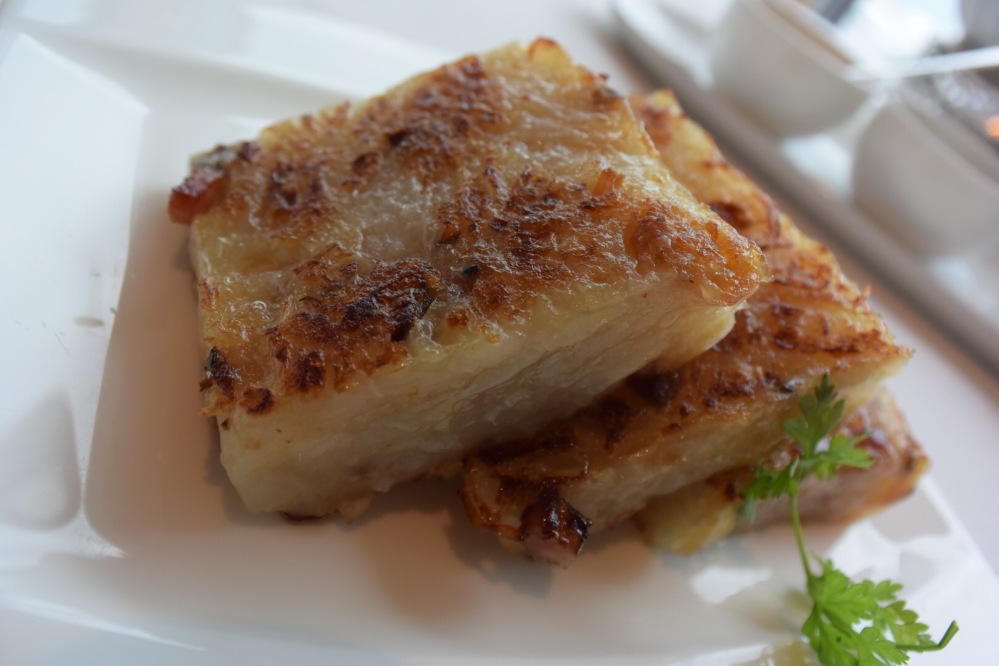

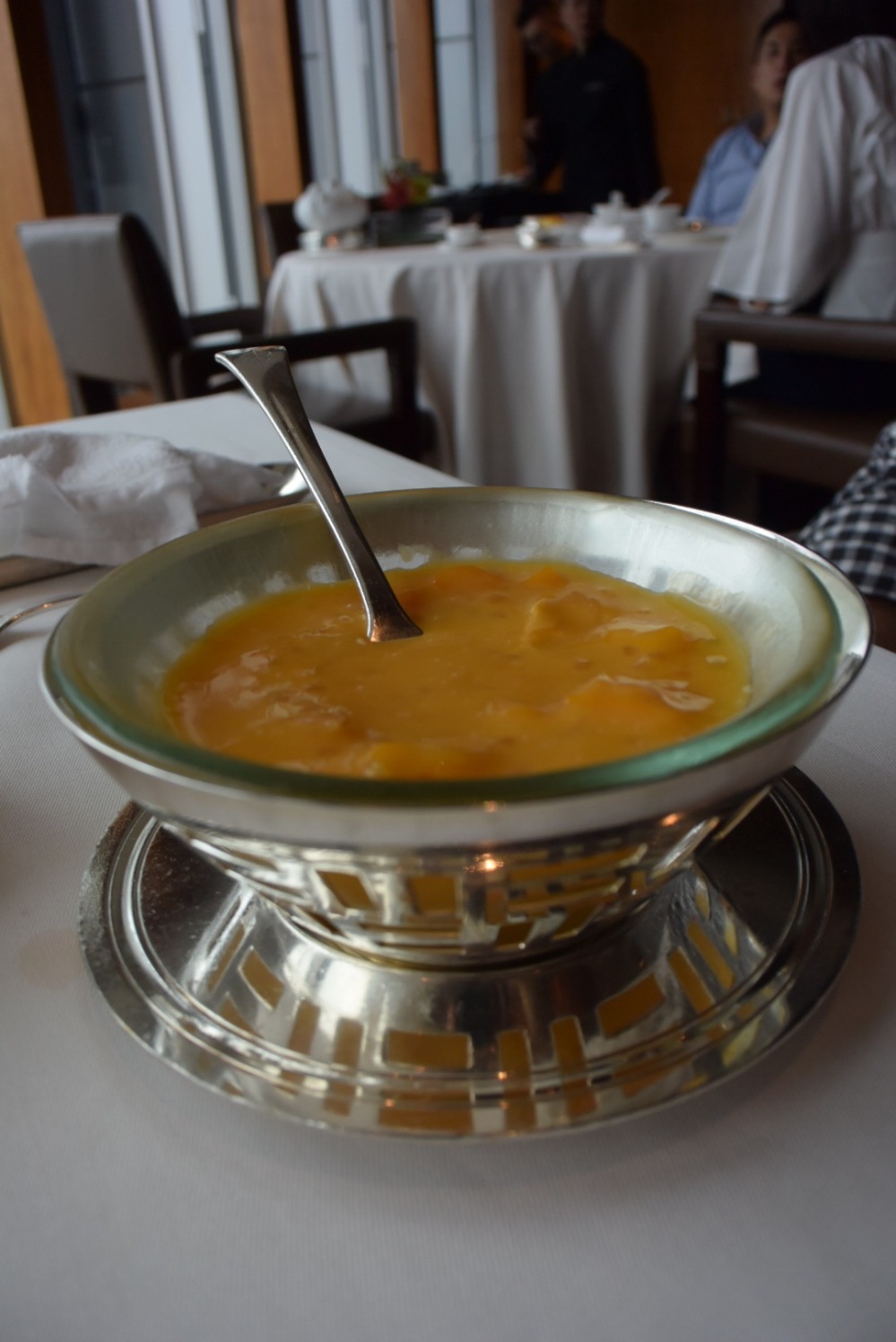
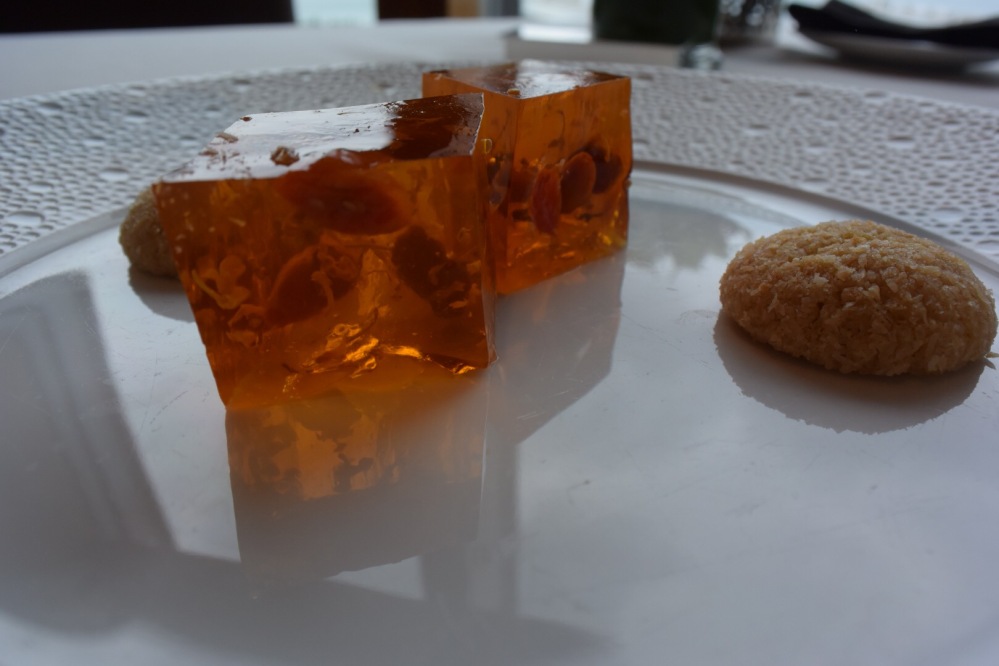
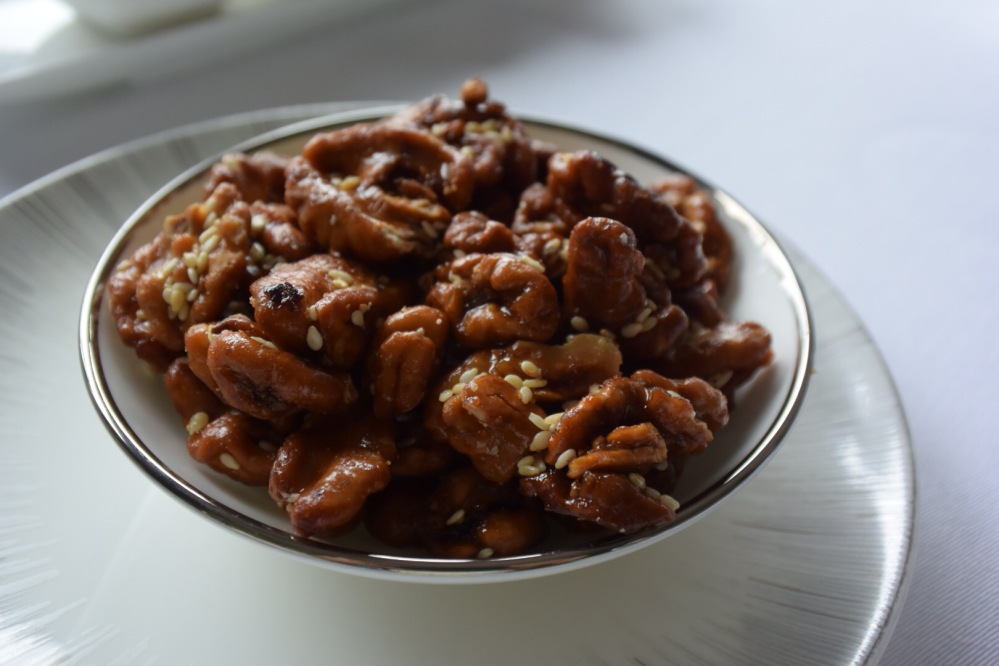
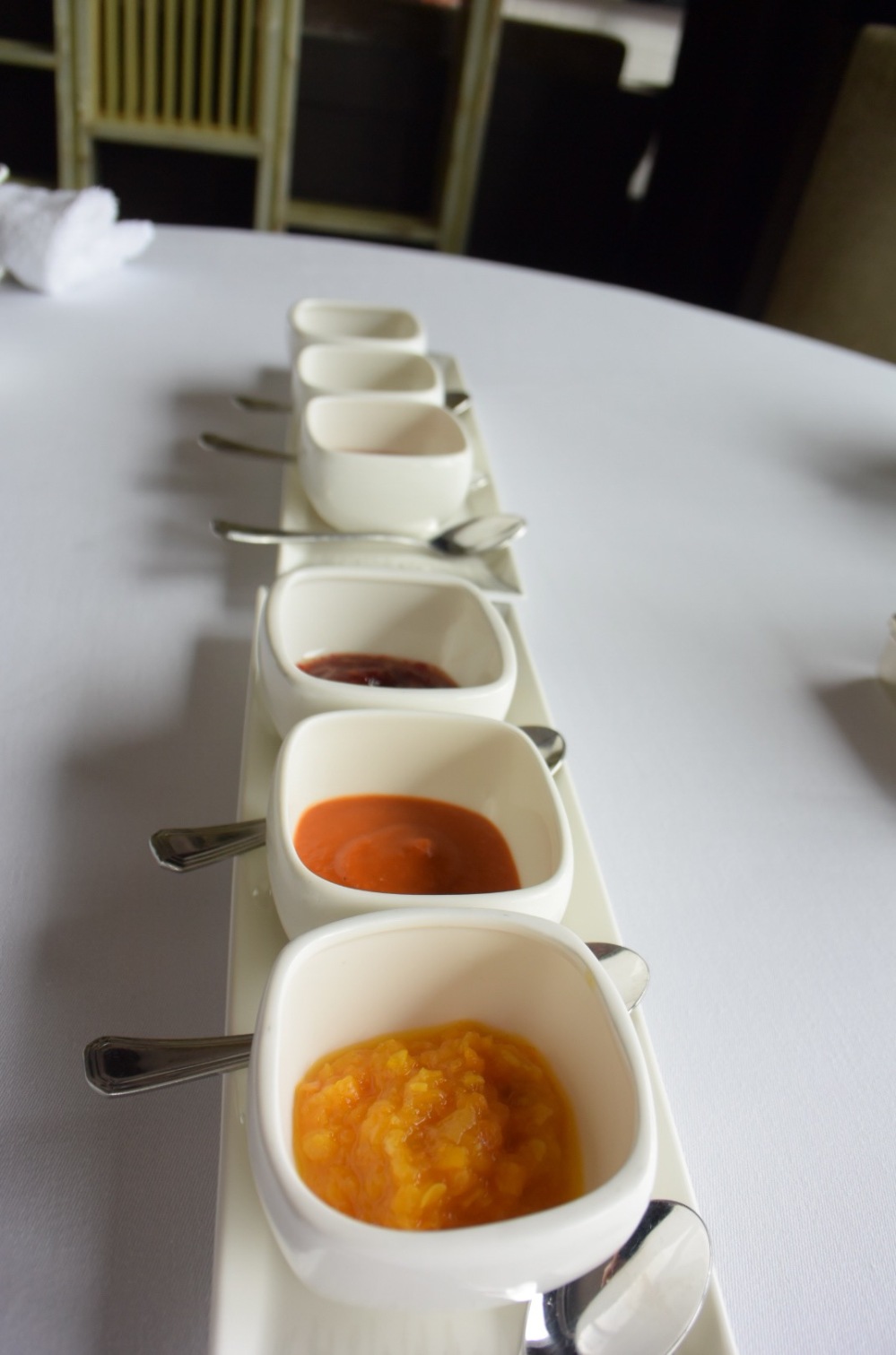

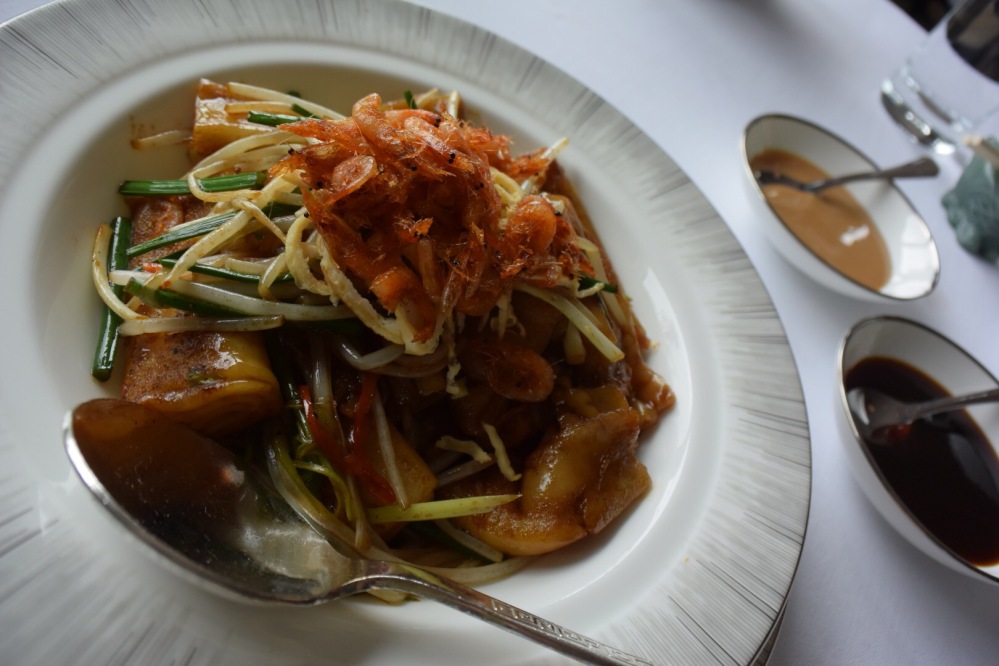
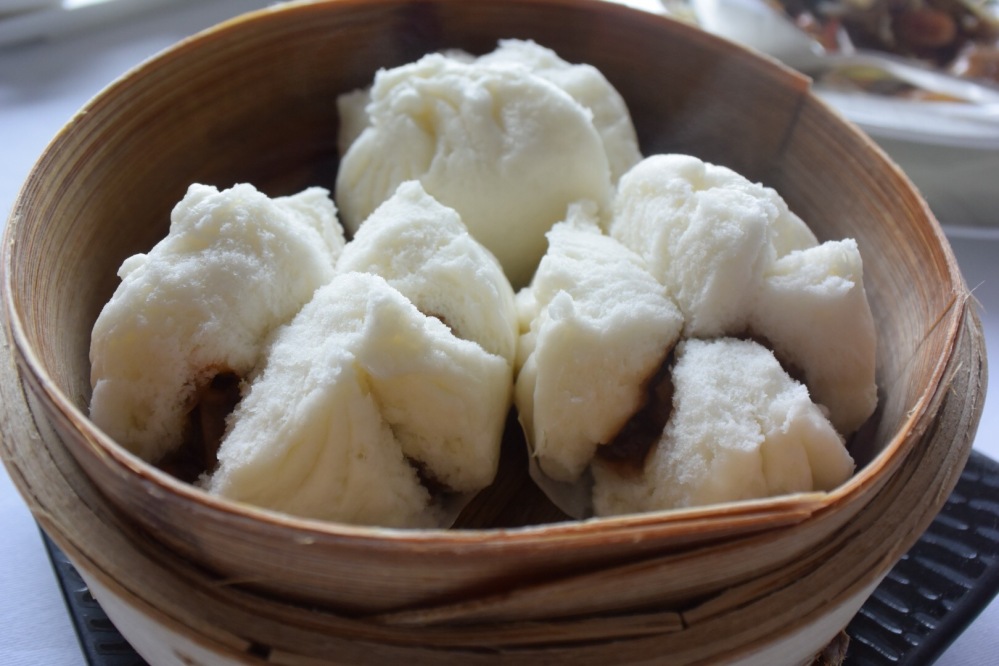
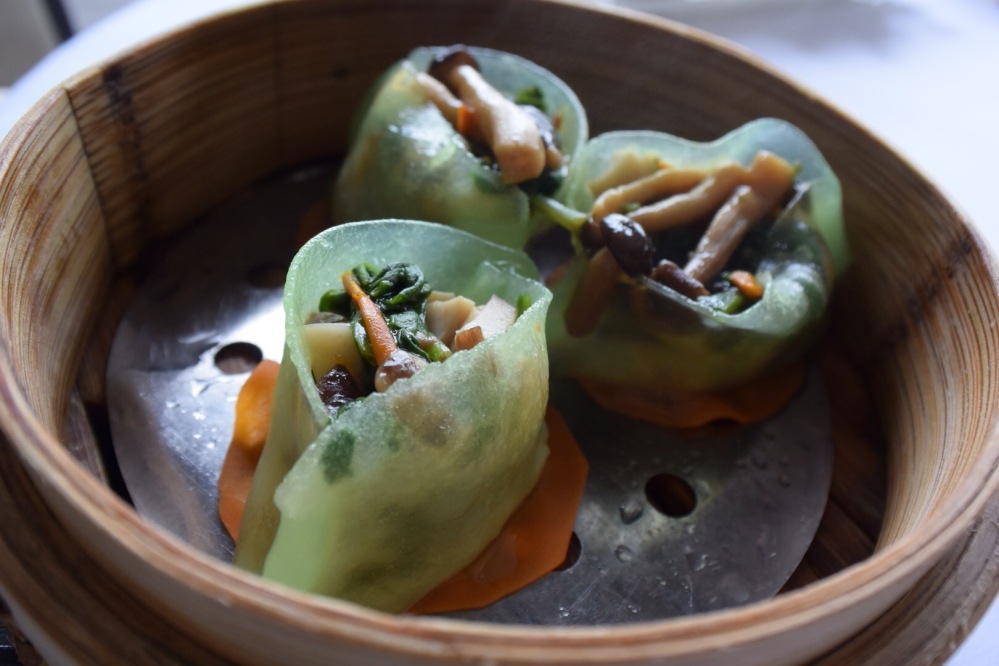
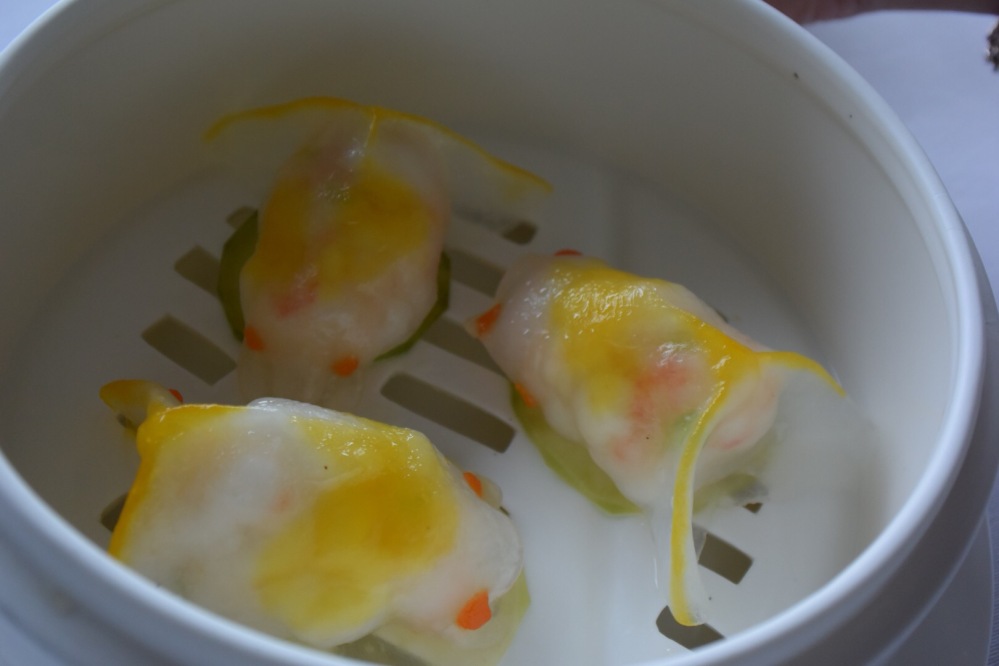
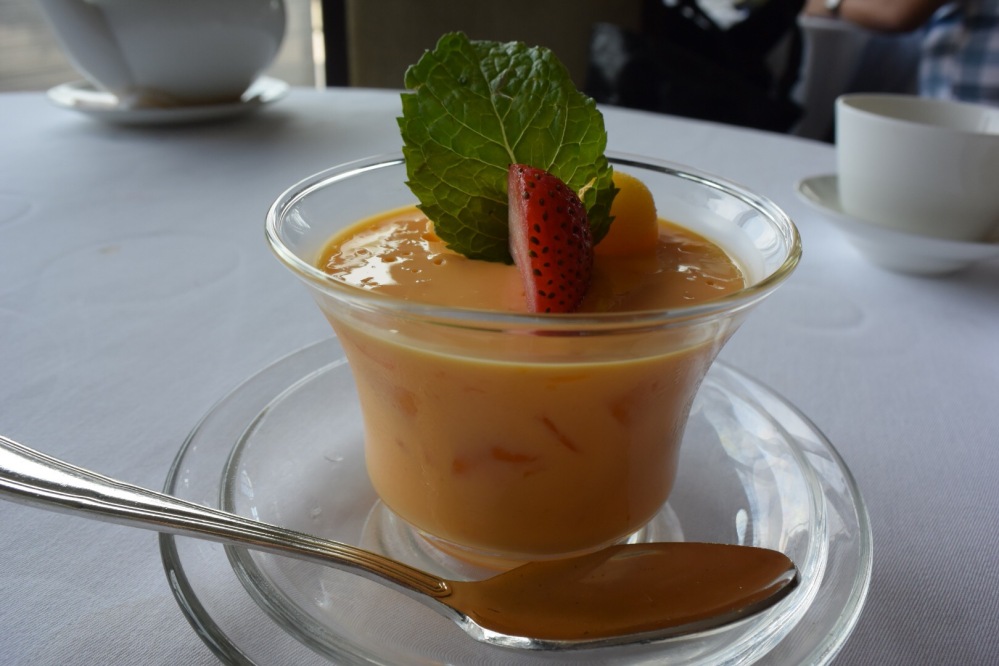
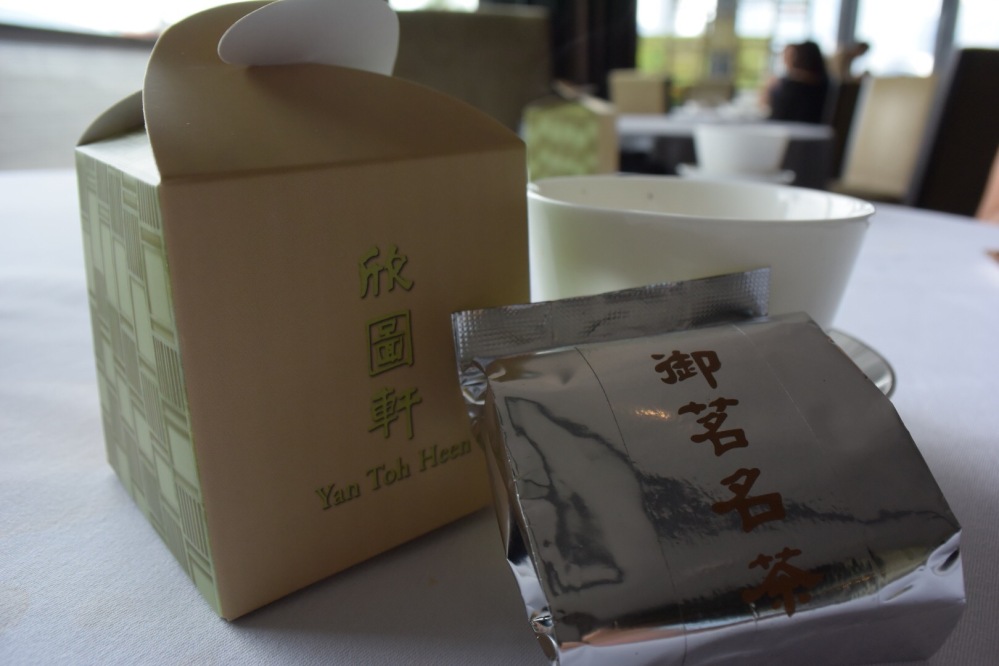
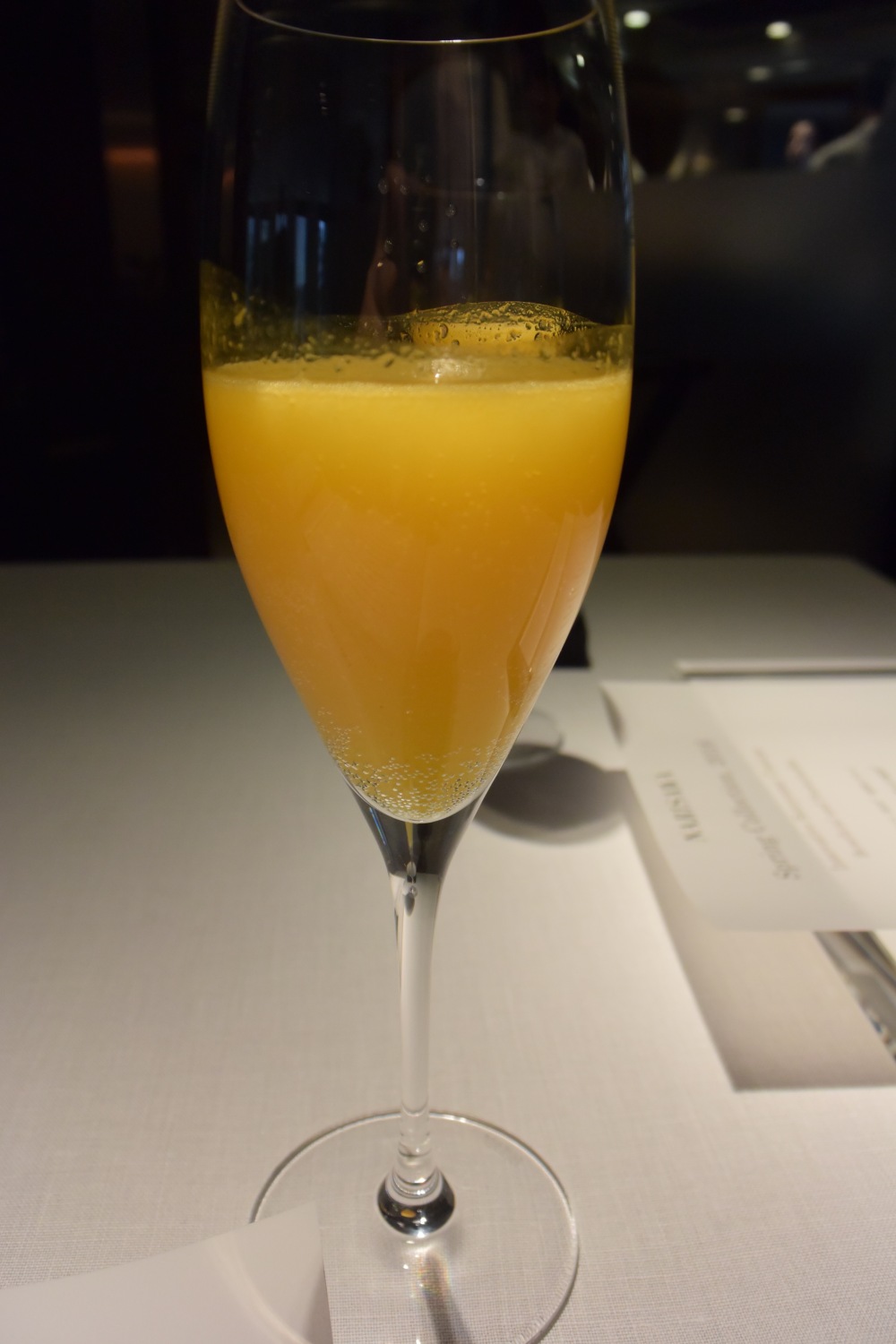
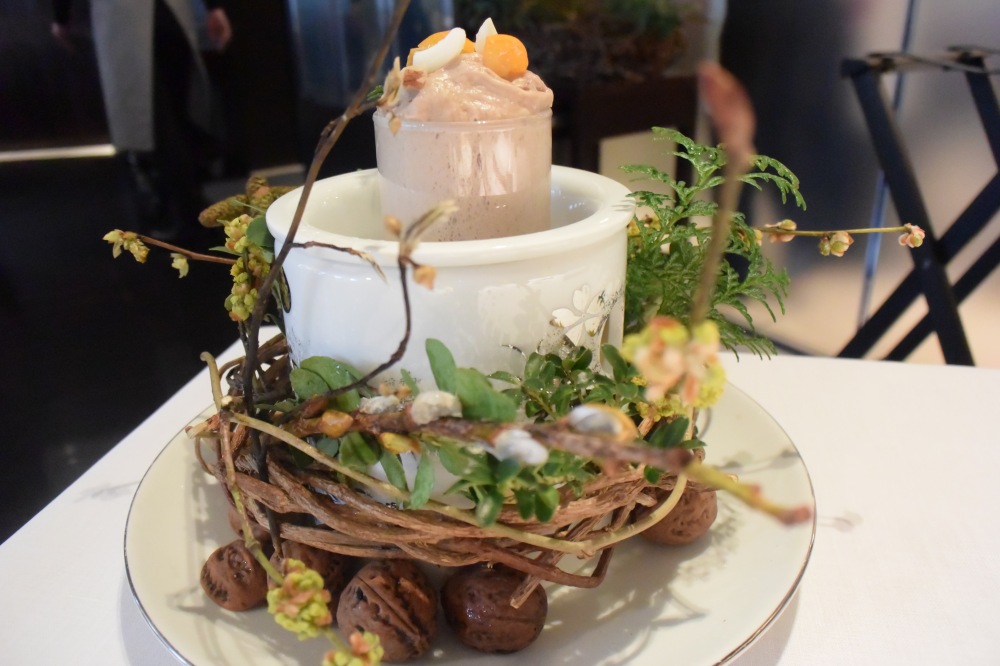
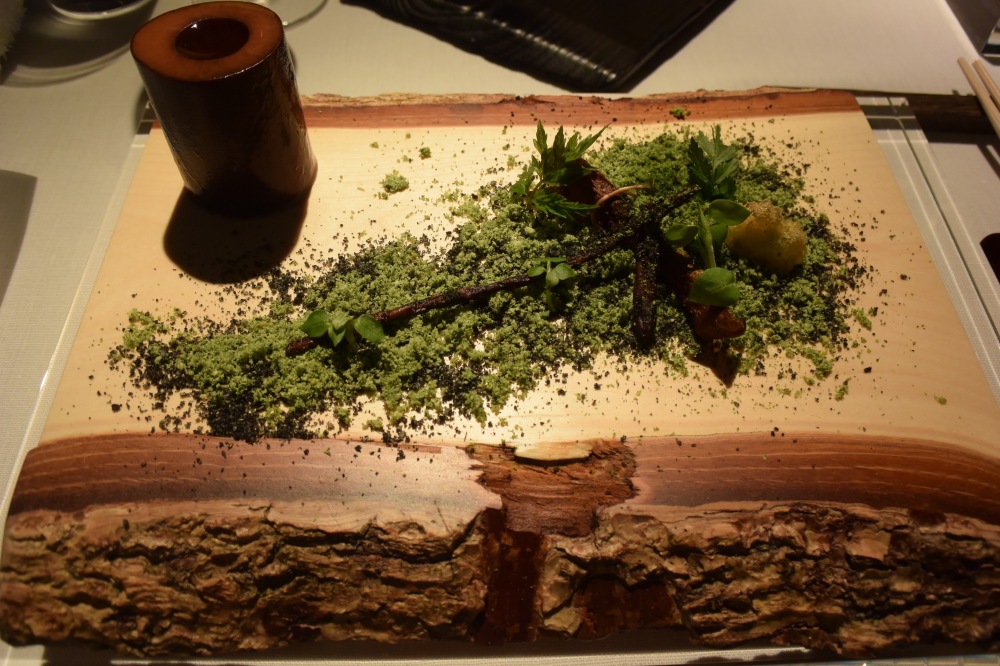
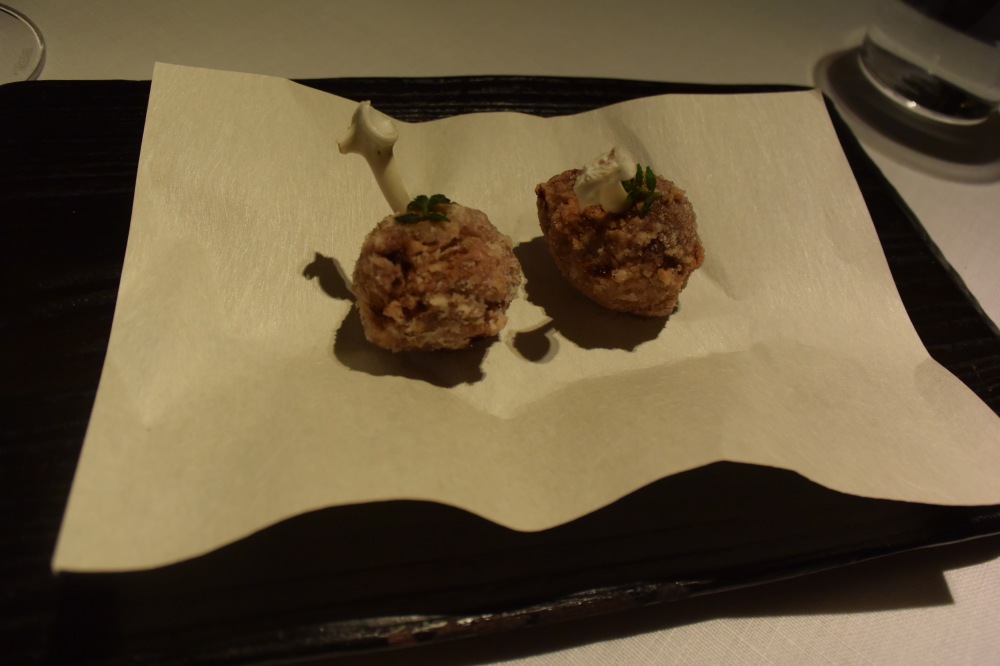

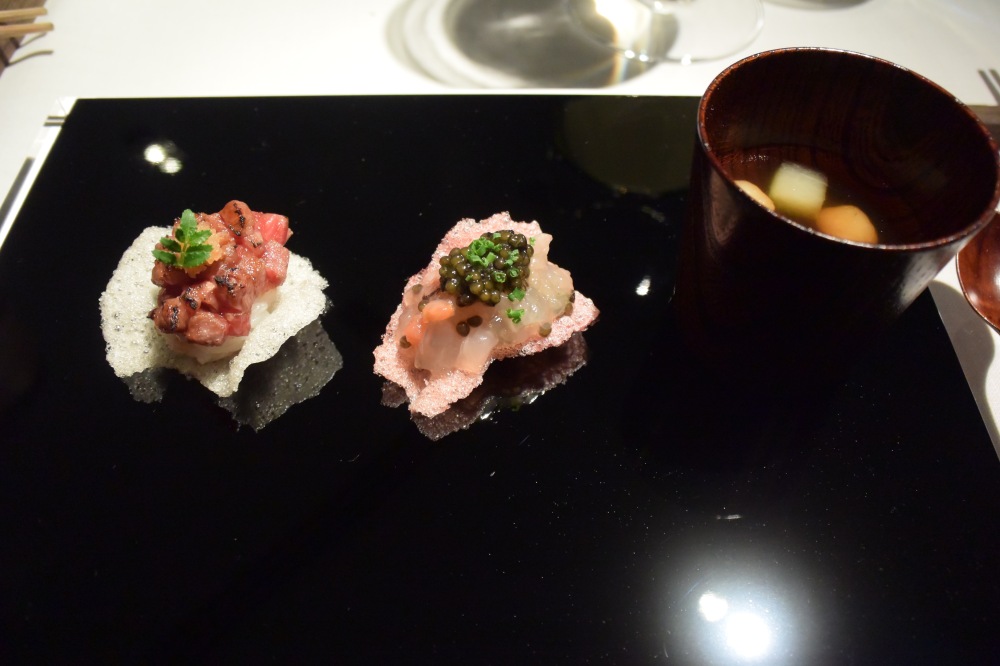


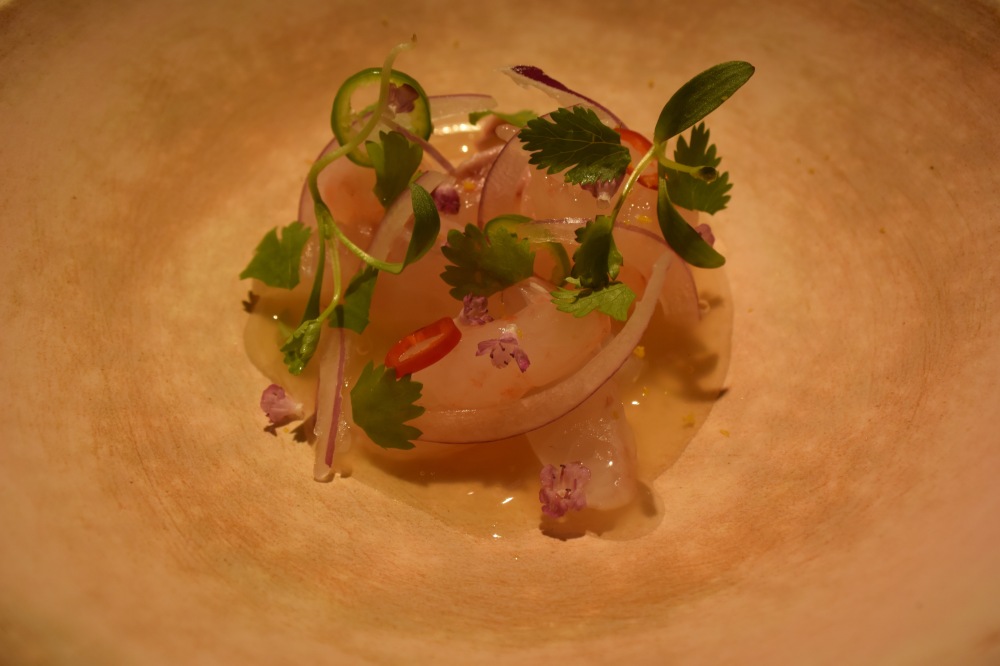
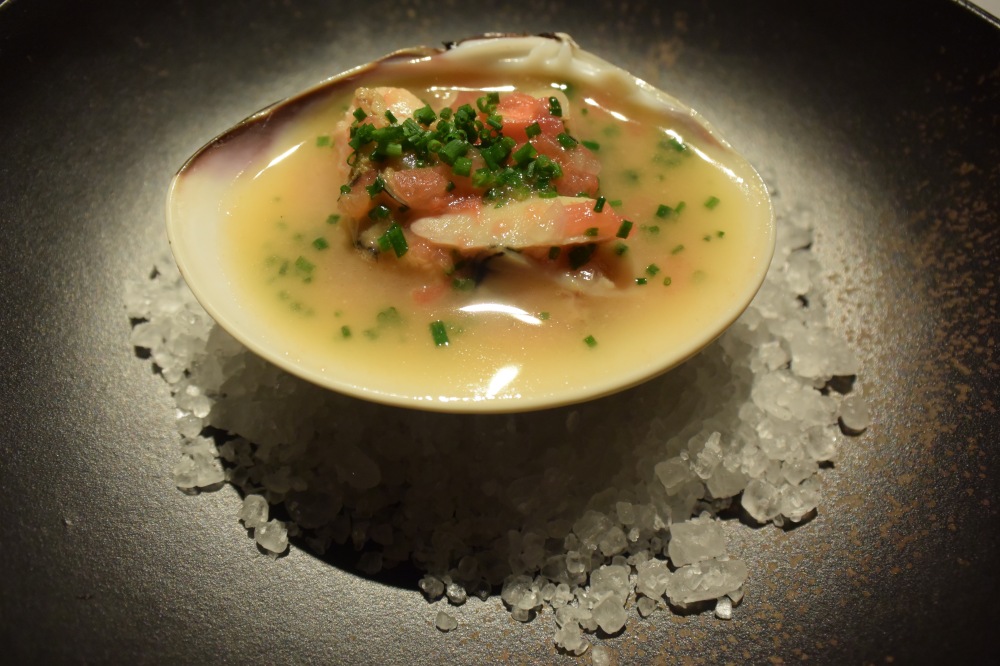
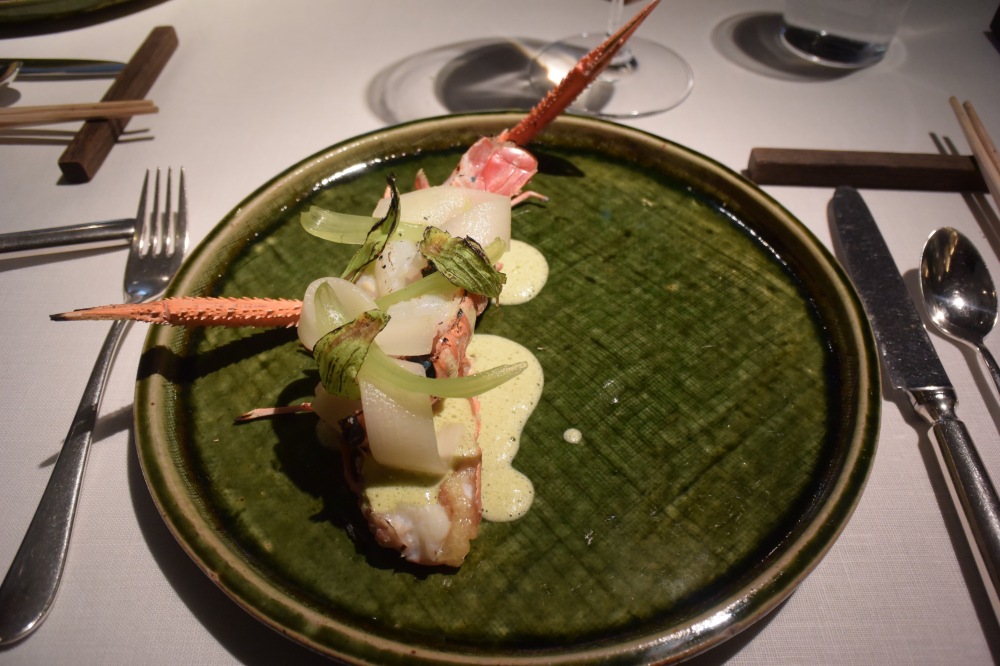

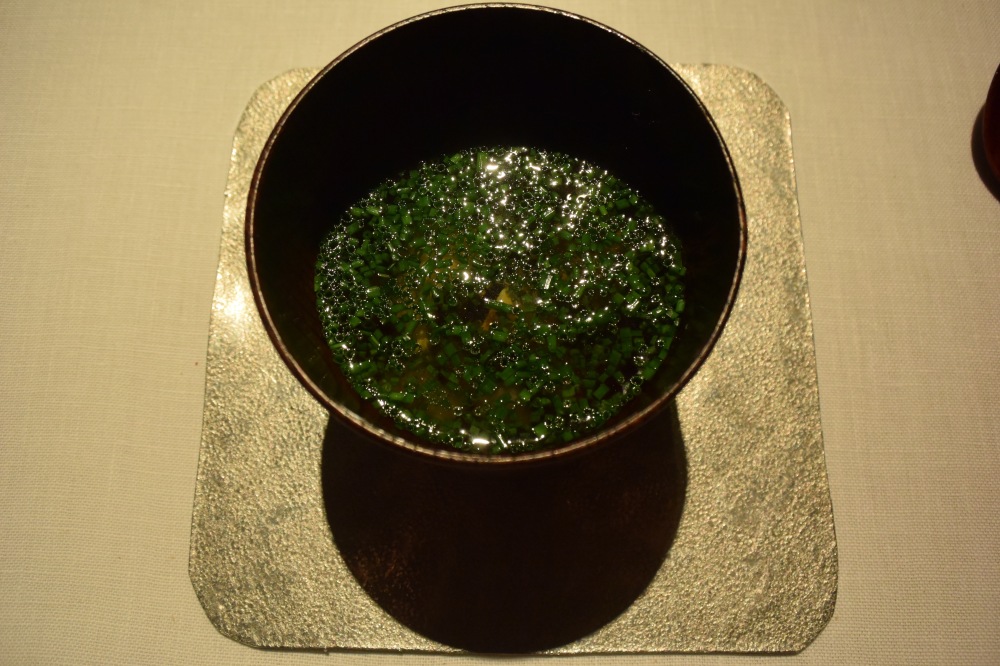
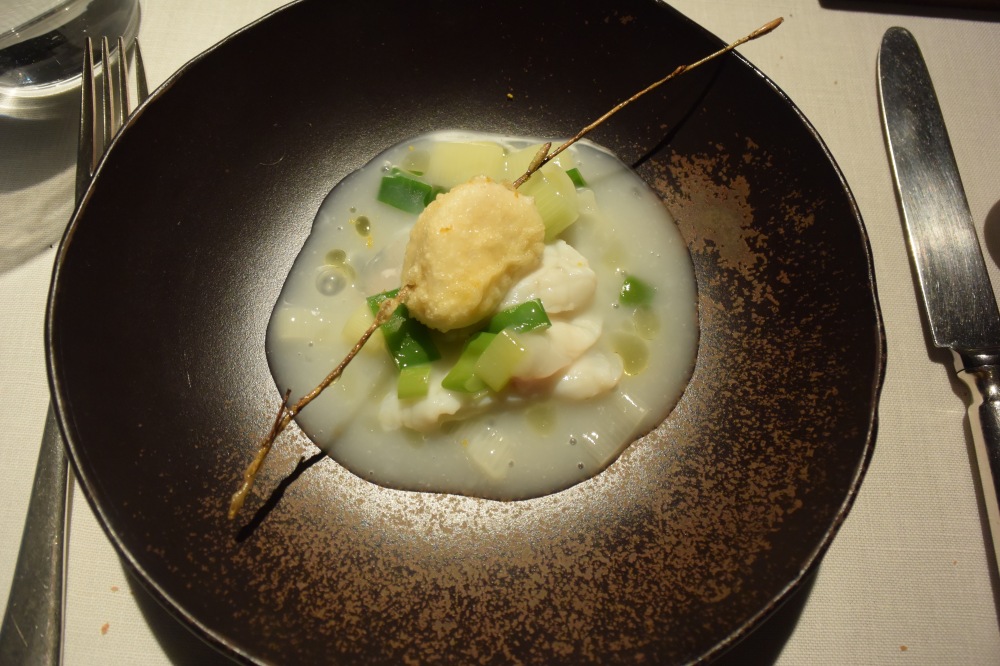
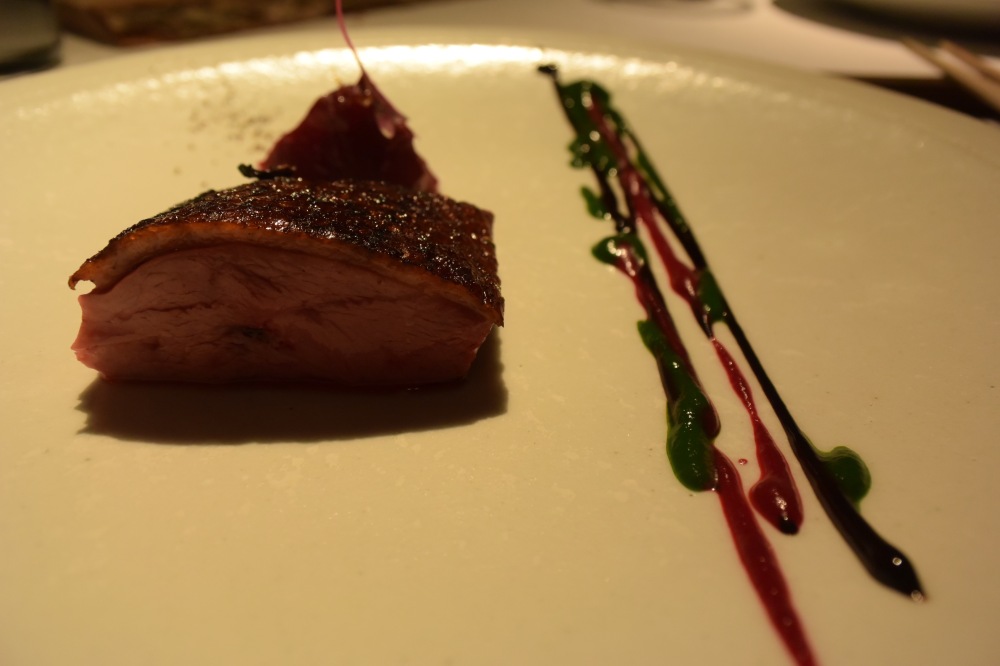
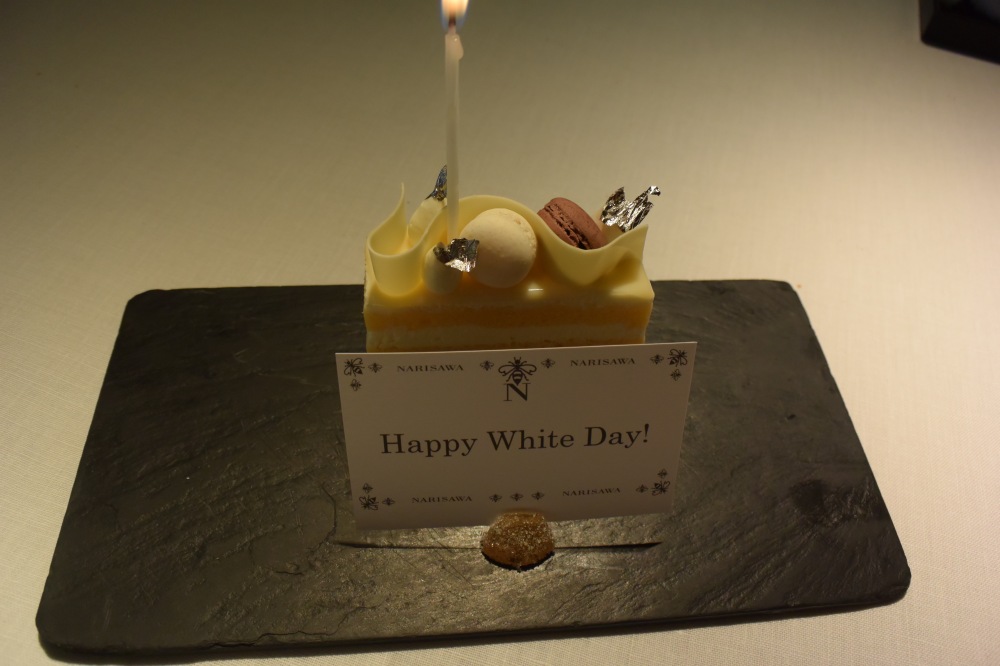
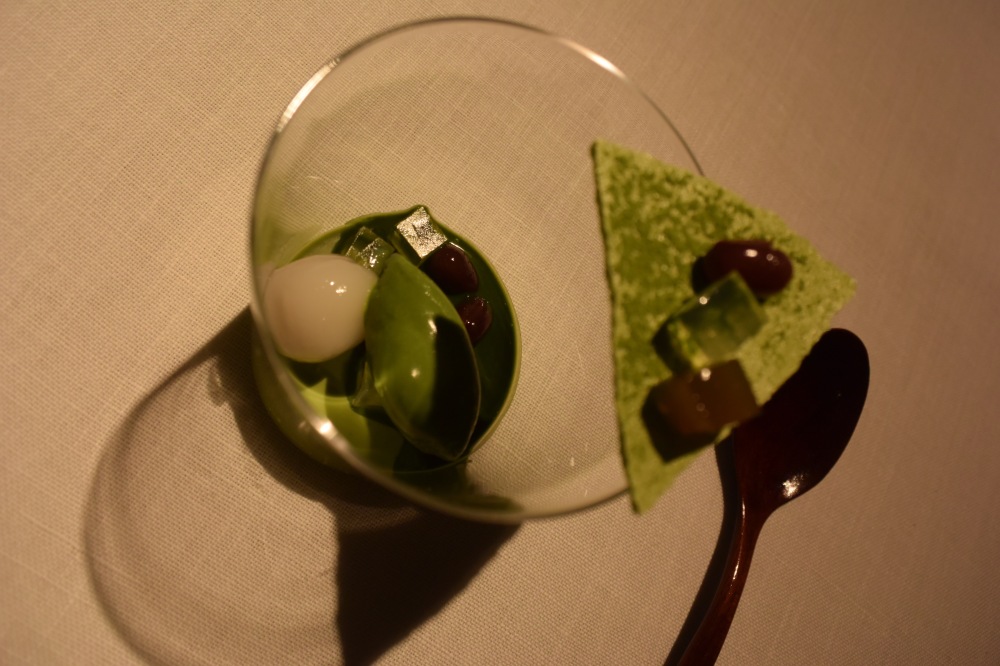
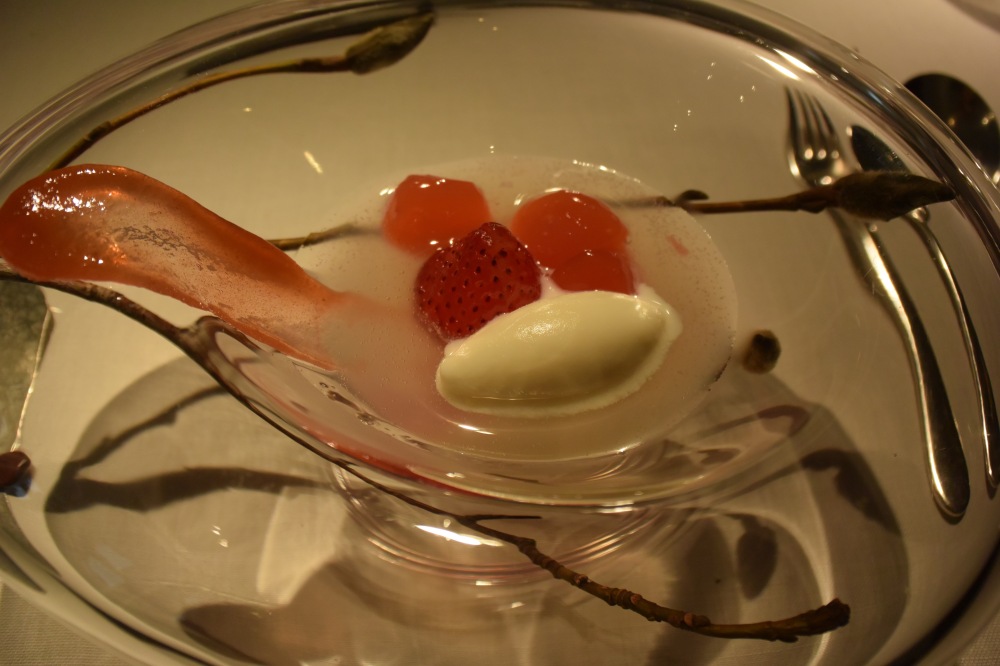
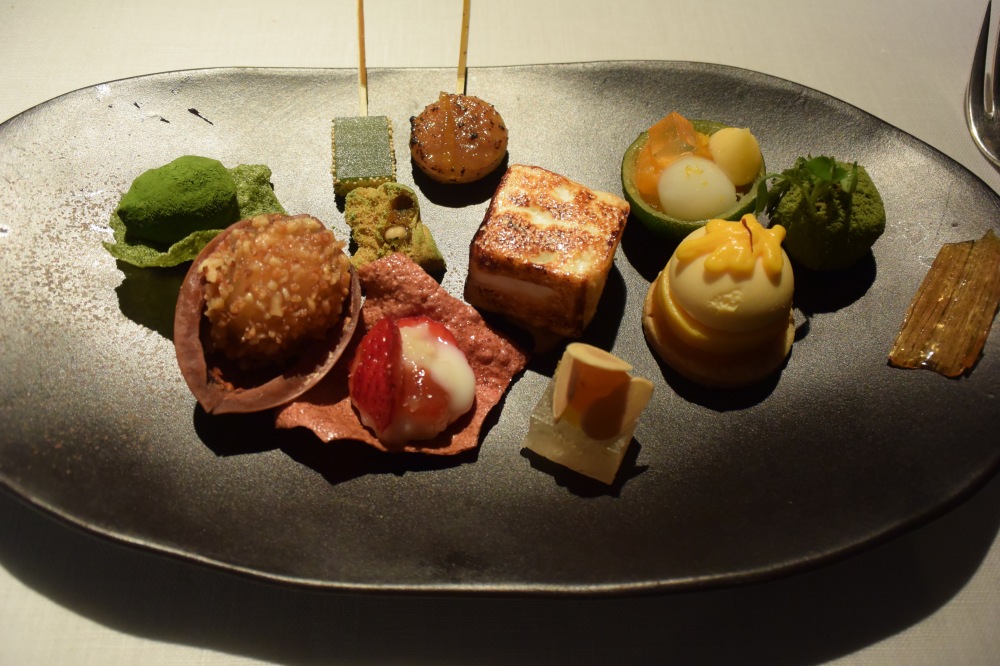

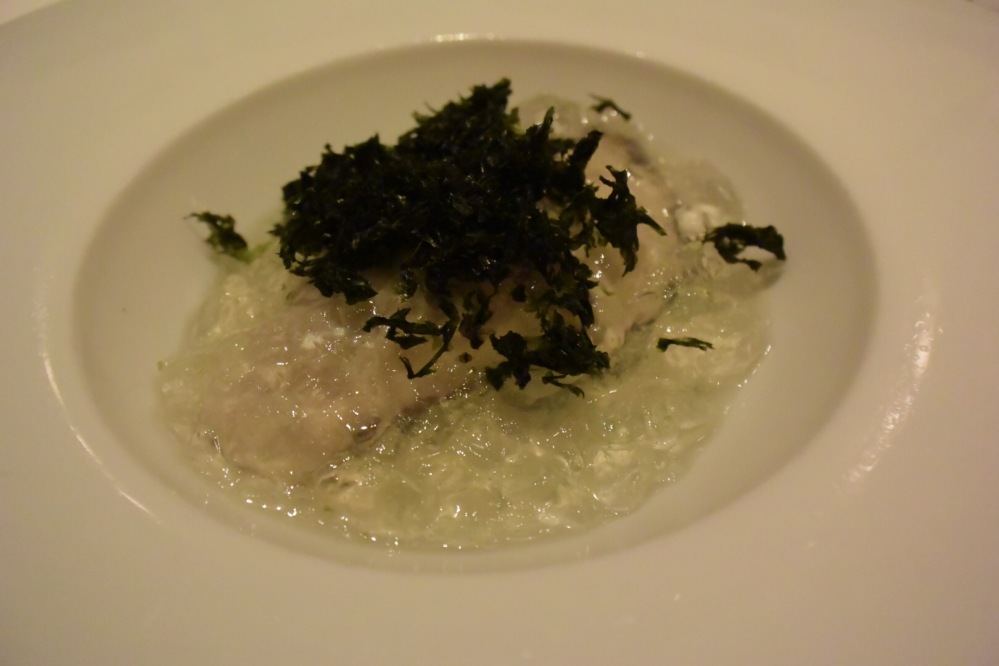 The course got started with a huge bang. An oyster atop a milk-based mousse containing seaweed and more oyster. The jelly is made of seawater and lemon, topped with roasted seaweed. Served cold, this was a wonderfully crafted, tart, and refreshing dish that artfully blended a variety of textures and flavors.
The course got started with a huge bang. An oyster atop a milk-based mousse containing seaweed and more oyster. The jelly is made of seawater and lemon, topped with roasted seaweed. Served cold, this was a wonderfully crafted, tart, and refreshing dish that artfully blended a variety of textures and flavors. The freshly baked bread. Carbs for me, please. I had three.
The freshly baked bread. Carbs for me, please. I had three.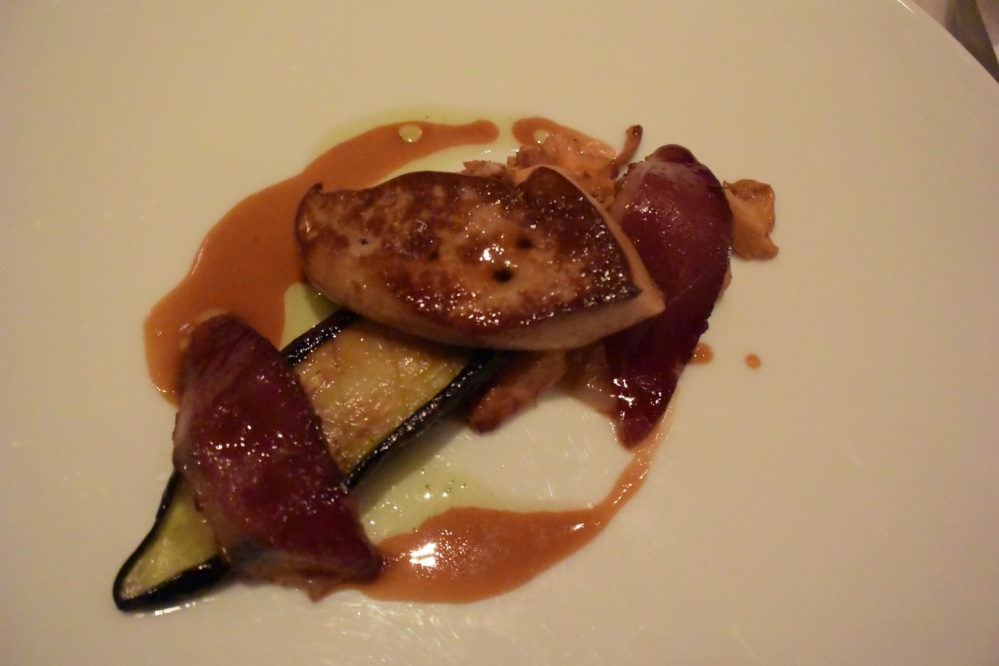 The next appetizer (portioned more like a main, but I’m not complaining). Foie gras, eggplant, smoked slivers of duck, and girolles, a rare French mushroom. Sage oil and duck sauce. An explosion of autumn colors and flavors, the foie gras almost sweet with absolutely no lingering bitterness. Yum.
The next appetizer (portioned more like a main, but I’m not complaining). Foie gras, eggplant, smoked slivers of duck, and girolles, a rare French mushroom. Sage oil and duck sauce. An explosion of autumn colors and flavors, the foie gras almost sweet with absolutely no lingering bitterness. Yum.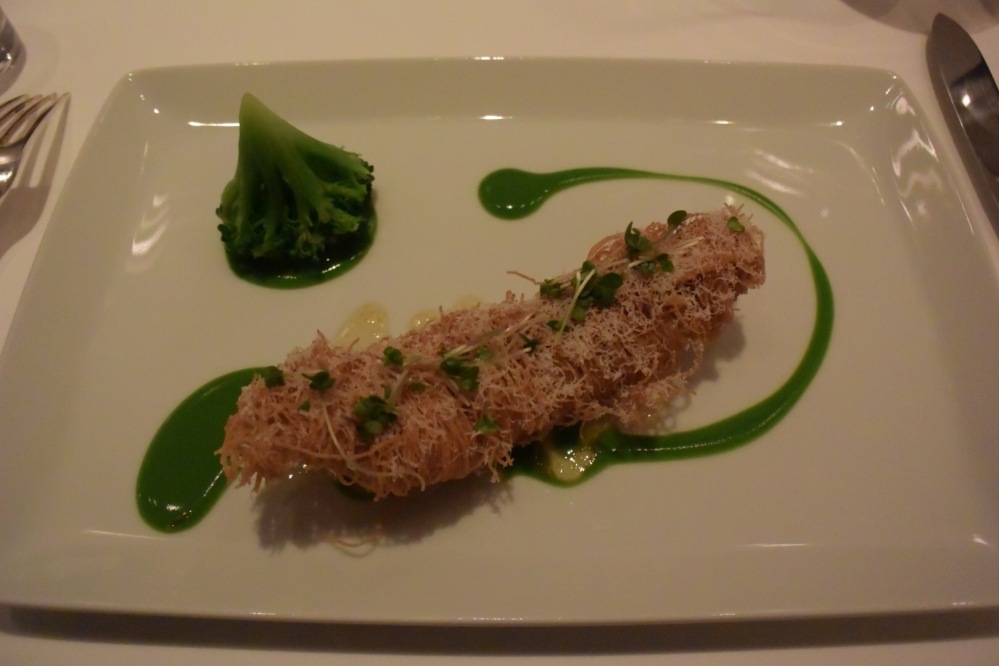 One of Edition’s specialities- sea bream fish wrapped in kanafeh (a flaky pastry of Turkish origin) dusted with parmesan cheese. This was served with an interestingly presented broccoli, broccoli sauce, and a lemon jam for acidity. A meaty fish prepared yet again with great balance in textures.
One of Edition’s specialities- sea bream fish wrapped in kanafeh (a flaky pastry of Turkish origin) dusted with parmesan cheese. This was served with an interestingly presented broccoli, broccoli sauce, and a lemon jam for acidity. A meaty fish prepared yet again with great balance in textures.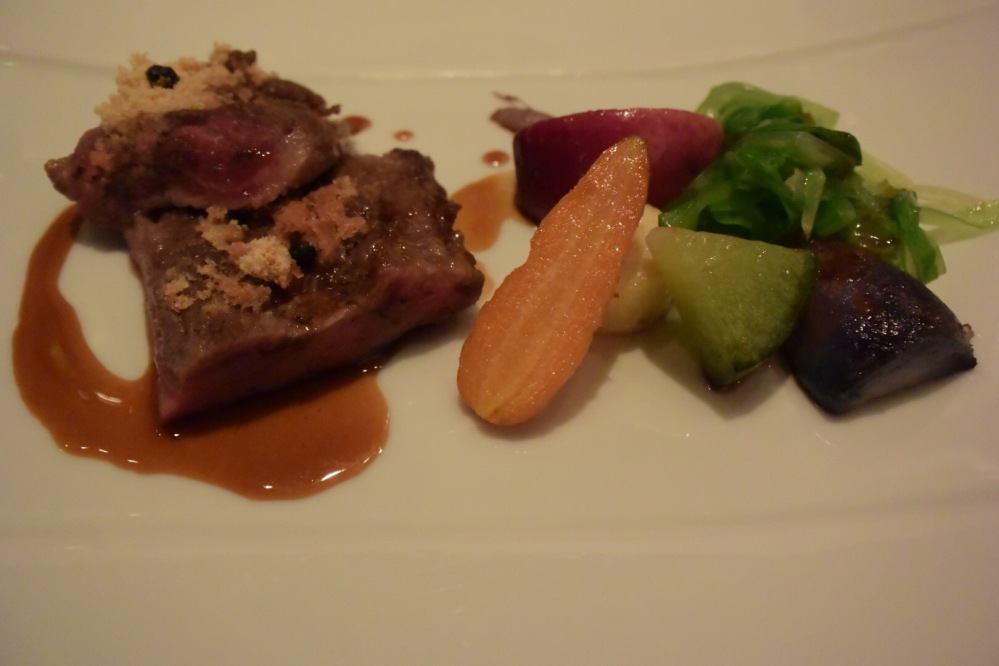 The meat course was a special Iberian pork shoulder. The server explained that one pig only has around 400 grams of shoulder meat, making it quite a delicacy. Served rare, it was buttery and juicy. The vegetables highlighted the season, including hime ninjin carrot, bitamin daikon, eggplant, radish, and seiryuusai.
The meat course was a special Iberian pork shoulder. The server explained that one pig only has around 400 grams of shoulder meat, making it quite a delicacy. Served rare, it was buttery and juicy. The vegetables highlighted the season, including hime ninjin carrot, bitamin daikon, eggplant, radish, and seiryuusai.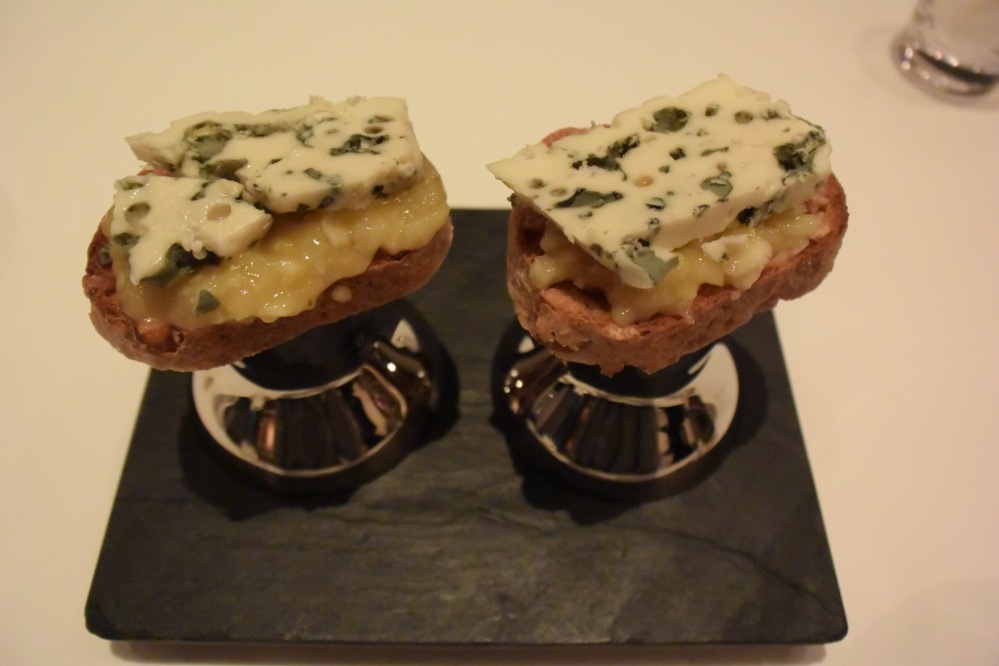 The cheese course really impressed us with its simplicity. The chef mashes sweet bananas, places those on top of chestnut bread, and tops it all with roquefort cheese. It’s so simple but so utterly delicious. I had never had bananas with cheese but the sweetness of the fruit works so well with the strong, moldy flavor of roquefort cheese. So, so good. We will try this at home.
The cheese course really impressed us with its simplicity. The chef mashes sweet bananas, places those on top of chestnut bread, and tops it all with roquefort cheese. It’s so simple but so utterly delicious. I had never had bananas with cheese but the sweetness of the fruit works so well with the strong, moldy flavor of roquefort cheese. So, so good. We will try this at home.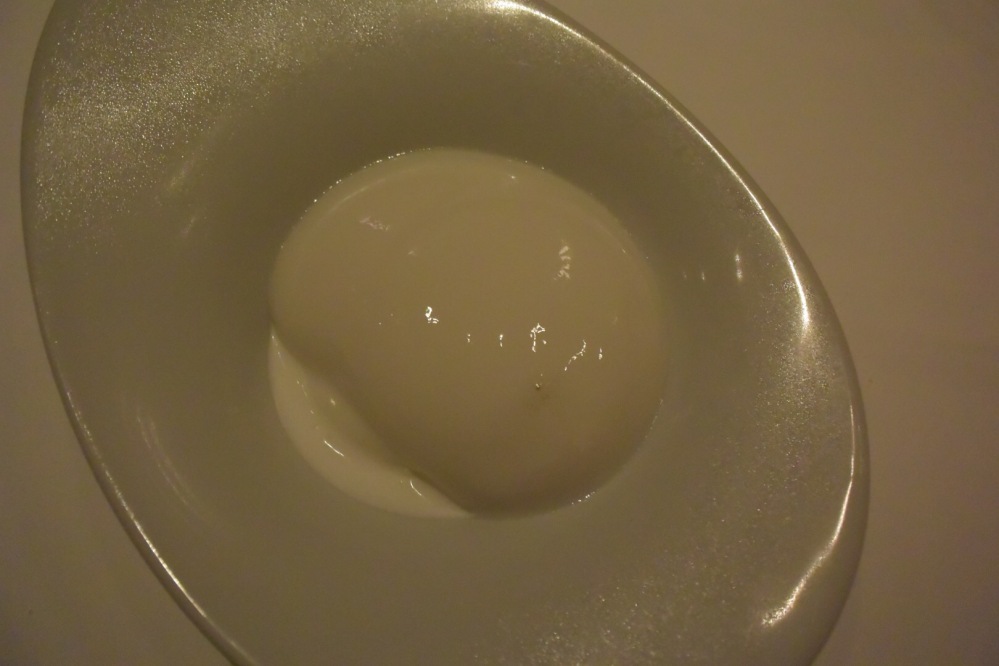 The first dessert appears simple in its sheer whiteness, but was actually quite technical. An espuma of lychee next to coconut ice cream served atop fresh dates.
The first dessert appears simple in its sheer whiteness, but was actually quite technical. An espuma of lychee next to coconut ice cream served atop fresh dates.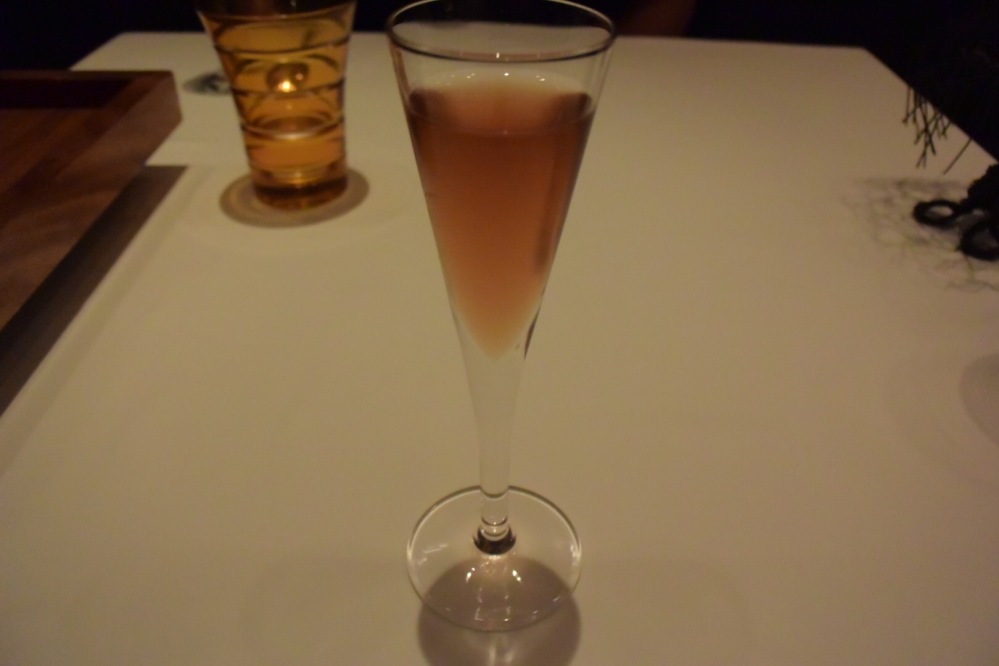 Next was a dessert “teaser,” a chocolate water. We were told to take a small sip before the first dessert.
Next was a dessert “teaser,” a chocolate water. We were told to take a small sip before the first dessert.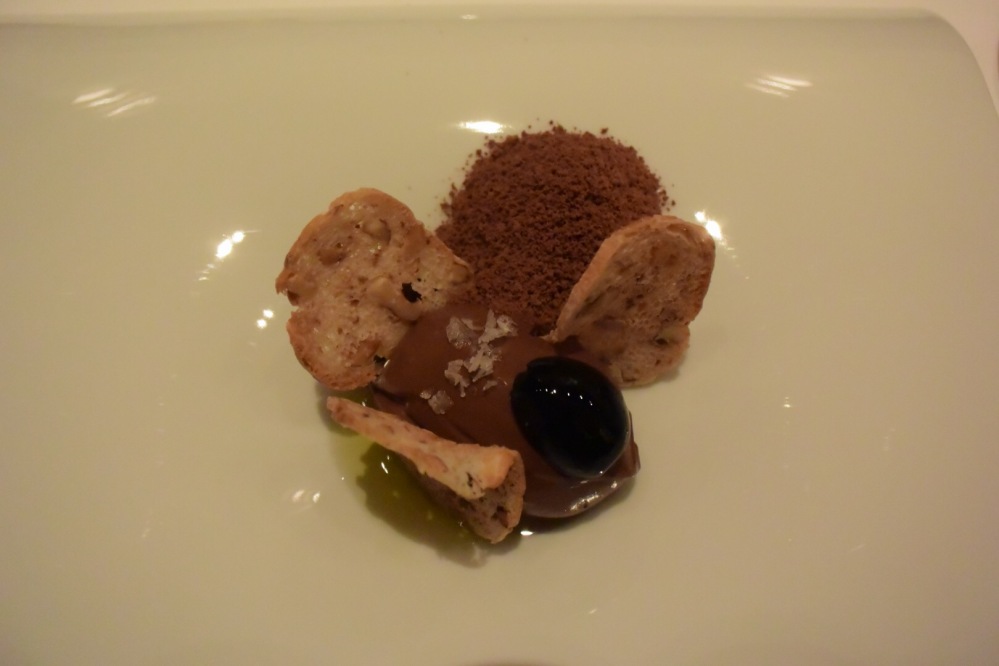 Another complicated dessert featuring chocolate sherbet powder at the top with a chocolate ganache topped with French salt, Majorcan olive oil, and an olive. We were instructed to again drink the cocoa water, which now tasted like regular water. I didn’t really get the point of this cocoa water “trick,” but the dessert was delicious anyways.
Another complicated dessert featuring chocolate sherbet powder at the top with a chocolate ganache topped with French salt, Majorcan olive oil, and an olive. We were instructed to again drink the cocoa water, which now tasted like regular water. I didn’t really get the point of this cocoa water “trick,” but the dessert was delicious anyways.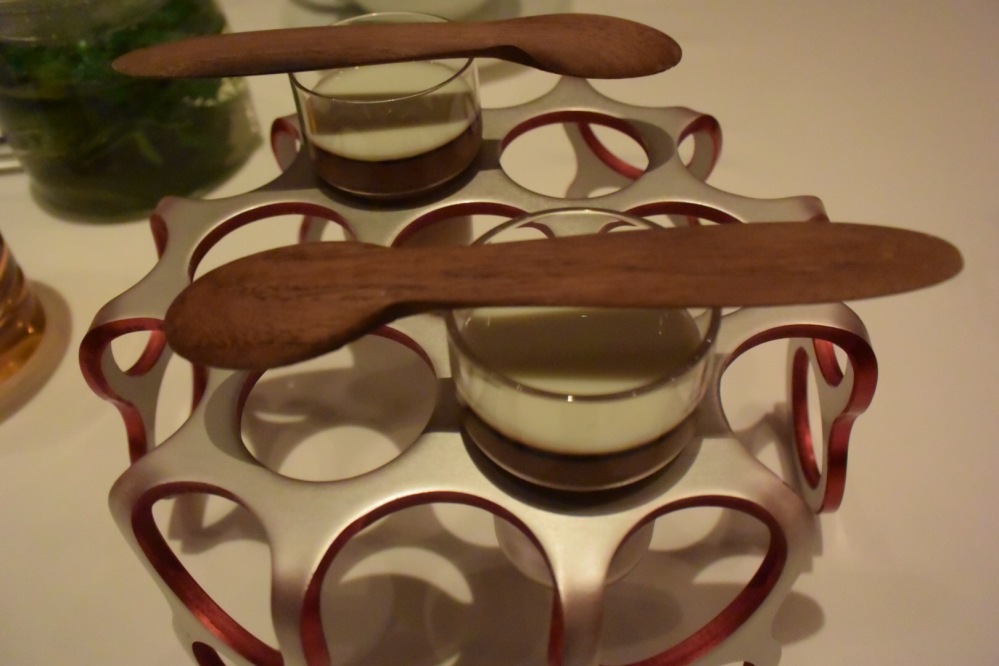 The petit fours served with our coffee and tea included this, an espresso and milk pudding served in a very cool holder…
The petit fours served with our coffee and tea included this, an espresso and milk pudding served in a very cool holder…